For years, Yorkville, on the Upper East Side of Manhattan, was a stronghold of the city’s German population. The whole area, which once stretched from East 72nd to East 96th, between the river and Central Park, was a veritable smorgasbord of Central and Eastern European expats, with the Czechs clustered around 72nd Street, the Hungarians around 79th and the Germans on 86th Street, aka Sauerkraut Boulevard. However, it was the Germans, drawn by job opportunities at Yorkville’s two massive breweries, who earned the area its nickname: Germantown.
After last week’s visit to Bushwick, you might think I would mix things up a bit and focus on a neighborhood not known for its German history and breweries.
The truth is, I rarely choose what neighborhood to write about next. It usually chooses me.
My focus on Yorkville came about due to a confluence of factors, not the least of which was the fact that my daughter had a volleyball clinic in the neighborhood.
On the first night of the clinic, I thought I would get some writing done in a local coffee shop. What I didn't know was that the basement of this coffee shop turns into a comedy club on Tuesday nights only. Don’t get me wrong, I enjoy amateur standup comedy as much as the next guy, but it doesn’t make for an environment conducive to writing. I stared blankly at my screen for an hour, nursing my lukewarm Americano, while peals of laughter echoed off the concrete walls leading to the basement. Whoever opened the set that night was killing it.
I decided to spend my second trip to Yorkville, also during a volleyball clinic, walking around and photographing. Unfortunately, there was a steady, heavy rainfall all day, and again, I was stuck indoors. Fortunately, it wasn’t a Tuesday.
I didn’t let these setbacks deter me, though. Over the course of this project, it has been fascinating to learn just how much of the city has been shaped by the humble combination of grain, hops, yeast, and water that has been keeping its citizens drunk for centuries.
From Bushwick to Stapleton to Manhattanville and Morrisania, the manufacture and consumption of beer has made fortunes and shaped neighborhoods. Like the lacing of foam that clings to the side of a pint glass, the industry has left an indelible mark on the city’s history.
In the early nineteenth century, Yorkville was a mix of working farms and lavish estates. Peter Schermerhorn, Jacob Astor and Archibald Gracie all had their summer escapes on the banks of the East River. By 1826, however, according to the New York Evening Post, Yorkville’s days as a respite from the rest of the city were quickly fading.
Twelve months ago there were not more than two or three buildings on the barren rock, where there are now upwards of sixty, some of them built in a good substantial manner of brick…There are already several extensive factories established in the village.
By then, immigrant workers from Ireland who had worked on the receiving reservoir in Central Park, part of the Croton Aqueduct system, had settled in the area. In the 1870s, the horsecar lines that ran along Second and Third Avenues were replaced with elevated railway lines. Soon, the Irish were outnumbered by a burgeoning German population.
BEER IS A FOOD
The Germans came to work at the breweries that occupied several blocks, from 90th to 94th Street, between Third and Second Avenue. The Hell Gate Brewery, established by German immigrant George Ehret in 1866, was the largest in the country.
To get the purest water for his beer, Ehret drilled an artesian well through 700 feet of rock. In 1900, the brewery produced over 600,000 barrels of beer.
Almost as big was the adjacent Jacob Ruppert brewery, whose flagship brew, Knickerbocker, was the official beer of the New York (baseball) Giants. Ironically, Jacob Rupert Jr., who took over the business, would go on to own the Giants’ bitter rivals, the New York Yankees.
Most of the brewery employees were German and lived on or near the premises. The brewery owners also owned the nearby tenements and the bars and saloons where their beer was sold. This sort of vertical integration made the owners very wealthy men. When Ehret died in 1927, his estate was valued at a staggering $40,000,000.
In 1969 the Ruppert Brewery, Yorkville’s last, was demolished. This incredible clock tower was saved by the developer only to be destroyed by vandals.
THE GENERAL SLOCUM
By 1900, the German population in New York City reached a peak of 828,758, or nearly one quarter of the population. Besides the breweries, what really cemented Yorkville’s status as the heart of the city’s German community was a tragedy that would remain New York’s largest man-made disaster until September 11th.
On June 14, 1904, the General Slocum, a white three decked paddle-steamer that had seen better days, left the Lower East Side carrying 1,331 members, mostly women and children, from the St. Mark’s Evangelical Lutheran Church to their annual picnic on Long Island. The church was a hub of the city’s German-American middle class.
As the ship passed 97th Street some of the crew saw puffs of smoke rising through the wooden floorboards. When they tried to put out the fire, they discovered that the ship’s firehoses had rotted through. By the time the captain had been notified, the flames had engulfed the boat.
In what turned out to be an incredibly twisted cost-cutting measure, a number of the life vests were later found to have had lead substituted for what should have been an equivalent weight of cork. Mothers who put the vests on their children and threw them in the water saw them instantly sink below the surface of the river.
Those wearing the typically heavy multi-layered garments of the day hardly fared better. And the waters they were jumping in, the appropriately named Hell Gate, were treacherous even under the best circumstances. In the end, 1,021 lives were lost.
Before the Slocum fire, most of the city’s German population lived on the Lower East Side. The mass trauma that accompanied the aftermath of the disaster precipitated a migration out of the neighborhood, with many of the residents choosing to relocate to Yorkville.
As horrible as the fire on the Slocum was, in just a few years, the tragedy would be overshadowed by the sinking of the RMS Titanic and its far wealthier and more glamorous passengers.
One of the Titanic survivors, Archibald Gracie the IV, wrote a book about his experiences on the Titanic called The Truth About the Titanic. He accomplished this feat in less than eight months, dying from complications from diabetes that had been exacerbated by the ordeal.
GRACIE MANSION
Archibald’s great-grandfather was the man who built Yorkville’s most recognizable building, Gracie Mansion.
The Scottish merchant built the home on what was then called Horn’s Hook in 1799 as a summer escape. John Quincy Adams and French King Louis Philippe were among the many dignitaries who sat on the porch enjoying the East River views. Gracie Mansion was also where Alexander Hamilton recruited the first investors for his newspaper, which would become the New York Post. Years later, that same publication would go on to mercilessly skewer the future residents of the mansion (with one notable exception).
The mayors didn't move in until 1942, when Robert Moses convinced Fiorello La Guardia, aka the "Little Flower,” to move out of his Manhattanville apartment and into Gracie Mansion. Prior to that, the building, which the city took over in 1896, had been used as an ice cream stand and public restrooms for nearby Carl Schurz Park. It was also the home of the Museum of the City of New York from 1923 to 1932.
La Guardia, who said, "My family is not keen about it, and it has no personal advantage for me," was not thrilled about the move. Several other mayors expressed reservations about moving in, but every mayor, with the exception of Michael Bloomberg, has lived (at least some of the time) in Gracie Mansion during their time in office.
The house was expanded in 1966 when Mayor Robert F. Wagner's wife, Susan Wagner, got tired of visitors wandering around the upstairs and, in some cases, rummaging through her underwear drawer.
Though the upstairs is closed off, Gracie Mansion opens its doors to the public. For $10, you can tour what the New York Daily News once called "a dignified dowager of early American architecture."
Hoping maybe to find some clues into Mayor Adams's forgotten password, I signed up for a tour this week. In keeping with the Yorkville curse, my ferry was delayed, and I arrived 20 minutes late. After pleading my case to the officer in the NYPD patrol car parked outside the gate, I was eventually ushered in through a "secret entrance" which turned out to be the downstairs kitchen. Our guide ("don't tell anyone, but Koch was my favorite") was fantastic, and you could tell she loved her job as she showed us around the mayoral residence.
It was interesting to get a peek behind the curtain, or in this case, behind the phalanx of brick, iron, wood and NYPD officers that separate “The People’s House” from the people. I could see why the famously private Mike Bloomberg chose to live in his 12,500 square feet Beaux-Arts limestone townhouse instead. Gracie Mansion, which hosts thousands of visitors annually, feels more like a museum than a home. During my tour, a slight scent of dignified dowager emanated from the heavy brocade draperies. Still, it’s worth a visit, just don’t try to sneak upstairs and smell Mayor Adams’ underwear.
I don’t care what anyone says, there are ghosts in there, man, listen, they’re creeping around.
Mayor Eric Adams
This picture of the mayor’s podium resting on a dolly tucked into a corner underneath the stairs was the only one I could manage to take.
THE BATTLE OF YORKVILLE
In the 1930s, the German-American Bund, an American Nazi group whose aim was to promote Hitler’s agenda in the US, held frequent rallies in Yorkville. Despite the group’s allegiance to Hitler, the German Nazi government disavowed the organization because it was seen as detrimental to Germany’s diplomatic interests in the US. When you’ve lost the Nazis…

On April 20, 1938, the Bund commemorated Hitler’s 49th birthday by marching from Carl Schurz Park to the Yorkville Casino. Alarmed by the Bund’s growing influence, former US Congressman and judge Nathan Perlman reached out to Jewish mobster Meyer Lansky to see if he could somehow put a damper on the Brownshirts’ enthusiasm and increasing influence.
Lansky gladly recruited a group of men including a who’s who of Murder Inc. members like Bugsy Siegel, Lepke Buchalter, Gurrah Shapiro, Tick Tock Tannenbaum, and Blue Jaw Magoon. According to Michael Benson’s Gangsters vs. Nazis: How Jewish Mobsters Battled Nazis in WW2 Era America, the mobsters posed as American Legion members and sat in the audience at the casino.
They waited until the head of the Bund, Fritz Kuhn, launched into his whole Sieg Heil routine and, unable to take anymore, attacked.
The stage was decorated with a swastika and a picture of Adolf Hitler. The speakers started ranting. There were only fifteen of us, but we went into action. We threw some of them out the windows. Most of the Nazis panicked and ran out. We chased them and beat them up. We wanted to show them that Jews would not always sit back and accept insults.
Despite the “ass-whooping,” the Bund continued to march and draw big crowds. On February 20, 1939, more than 20,000 people attended a Nazi rally organized by the Bund at Madison Square Garden. Thankfully, it was all downhill from there
Months later, Fritz Kuhn was accused of embezzling money from the organization. He was eventually convicted of grand larceny and forgery. Without a suitable demagogue at their helm, the Bund started to fall apart. Several other German American Bund leaders were jailed for various offenses, and after the United States entered World War II in December 1941, the US government outlawed the organization.
IT’S LIKE WATCHING NEW YORK MELT
I was surprised to read that Yorkville is the most densely populated neighborhood in the city, making it one of the most densely populated regions in the world, right between Byculla in Mumbai and Kiambio in Nairobi. But after walking around for a bit, I could see why. Construction of the 1,200-unit Ruppert Towers on the site of the former Ruppert Brewery was the first domino to fall in an explosion of residential growth.
The completion of the long-awaited extension of the 2nd Ave subway line to 86th Street in 2017 was accompanied by another surge of development. A New York Times article, ‘It’s Like Watching New York Melt’: As Towers Rise, an Old Neighborhood Fades (gift link), discusses the changes in the neighborhood.
“What makes New York different from other cities is that we’re constantly replenishing our population and reinventing ourselves. Cities that stand still are dying.”
Mitchell Moss, a professor of urban planning at New York University.
SIGHTS AND SOUNDS
This week’s audio was captured while passing by one of Yorkville’s many schools. The particularly lively recess break is bookended by the sounds of the NYC ferry ride I took to get to Gracie Mansion.
FEATURED PHOTOGRAPHER
I’m currently reading Janet Malcolm’s memoir Still Pictures: On Photography and Memory, a collection of vignettes based on old family photographs. Malcolm was a longtime writer for The New Yorker and published over a dozen nonfiction books and collections of essays.
Her family emigrated from Czechoslovakia in 1939, fleeing Nazi persecution of Jews, making it onto one of the last ships to leave Europe for America before the outbreak of the war. They eventually ended up in Yorkville in an apartment on East 72nd St.
In addition to her writing, Malcom was an artist who had several shows at Lori Bookstein Fine Art. She published a book of photographs, still lives of burdock leaves in her studio, but I find her collage work more compelling. These are from “The Emily Dickinson Series,” a collection of collages assembled with construction paper, glassine, charts, photographs, and shards of poems.

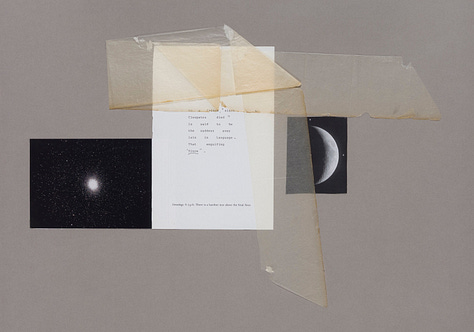
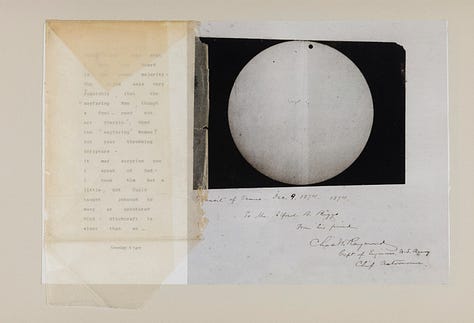
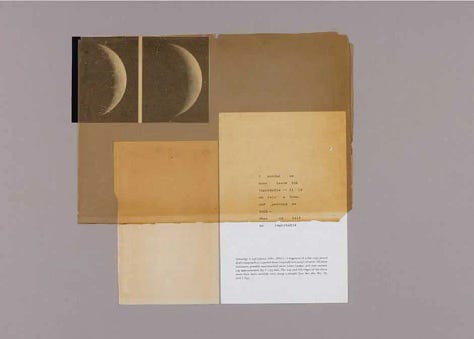
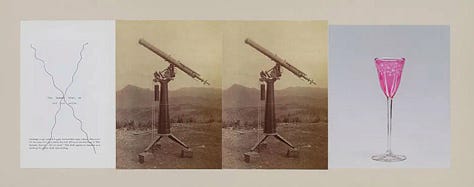
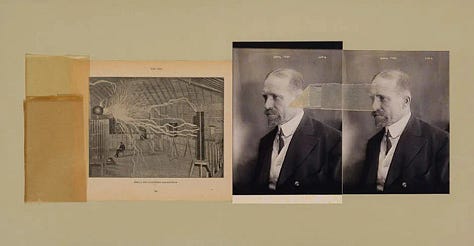
The heavy odds against finding the desired... work of art in the mess and flux of life, as opposed to the serene orderliness of imagined reality, give a special tense dazzle and an atmosphere of tour de force to any photographs that succeed in the search.
There is a collection of Malcolm’s New Yorker essays on photography called Diana & Nikon. While the book is unfortunately out of print, you can e-borrow it from the Internet Archive.
ODDS AND END
If you want a taste of the old neighborhood, you can grab some bratwurst and sauerkraut at butcher and grocery store, Schaller & Weber, the Yorkville institution that has been open since 1937. And, in a development that would have Ferdinand Schaller spitting out his wiener schnitzel, you can get four different kinds of vegan wursts next door at Schaller’s Stube Sausage Bar.
On the same stretch, you’ll find Heidelberg, Yorkille’s only remaining German restaurant.
For tri-state residents of a certain age, you may remember the WPIX holiday Yule Log. While these days it’s a cinch to watch “ Relaxing Fireplace with Burning Logs and Crackling Fire Sounds for Stress Relief in 4k” on YouTube, in the 60s, 70s and 80s, you had to until Christmas Eve for the two hour Yule Log broadcast. I learned on my tour that it was recorded in Gracie Mansion. Well, the original was recorded in Gracie Mansion. After a spark jumped out of the fireplace and burnt a hole in an antique rug, the mansion’s caretakers refused to let the producers back in to reshoot the footage on 35mm. The replacement footage was shot in Palo Alto of all places.
Like the Yule Log, the hit 1970s sitcom The Jeffersons also engaged in a bi-coastal switcheroo of sorts. The panning shot of their “Deluxe Apartment in the Sky” was indeed Yorkville’s Park Lane Towers on 185 E. 85th St., but the scene of George and Weezy entering the building's front doors was shot in Santa Monica.

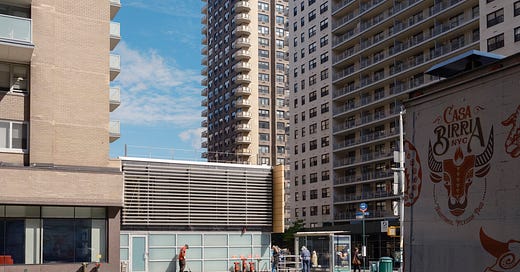


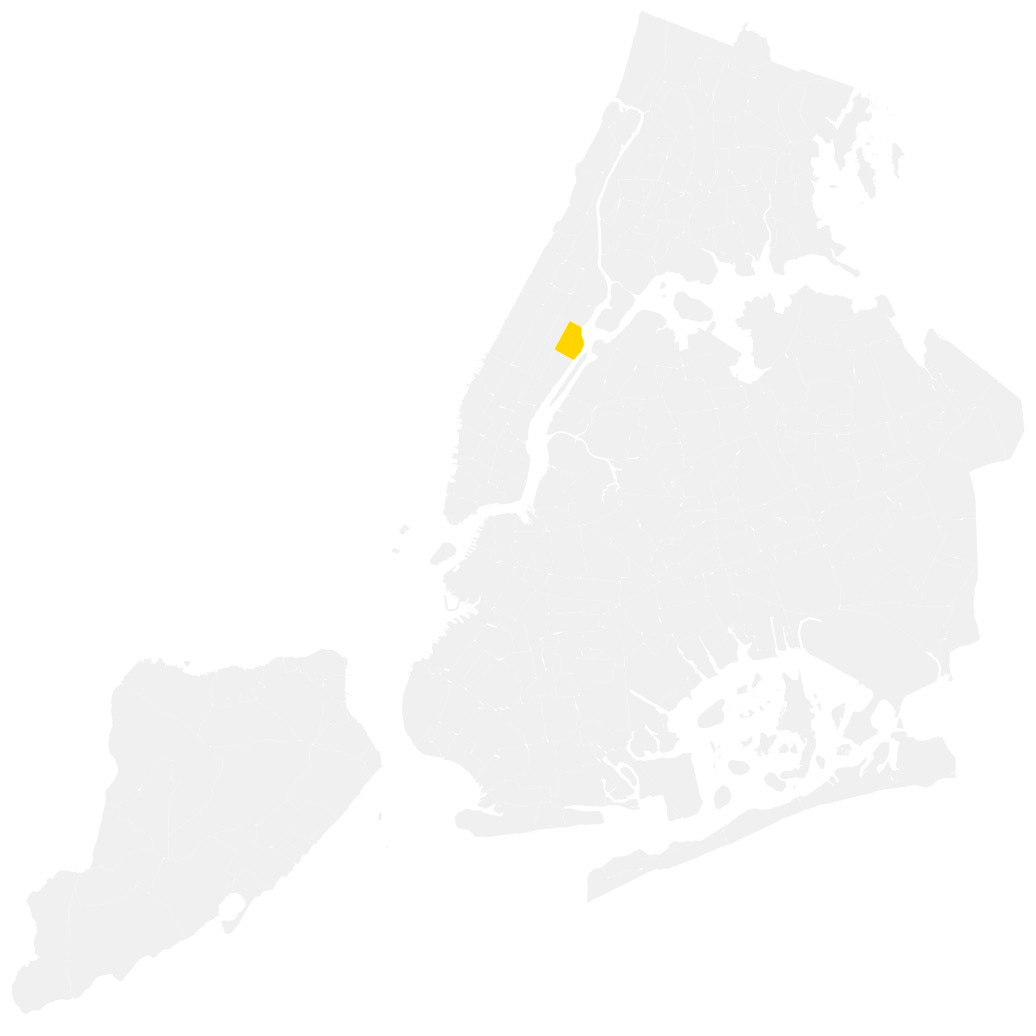
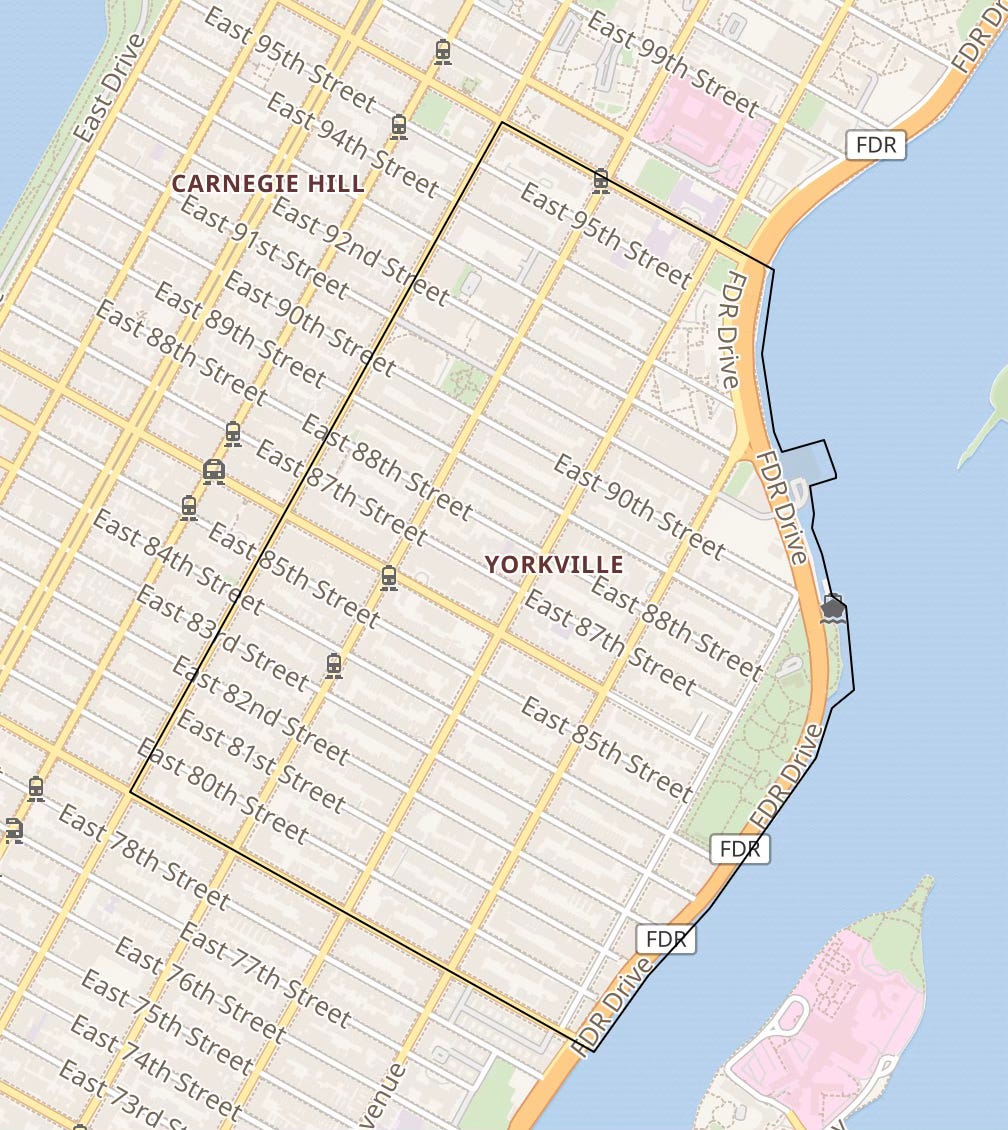

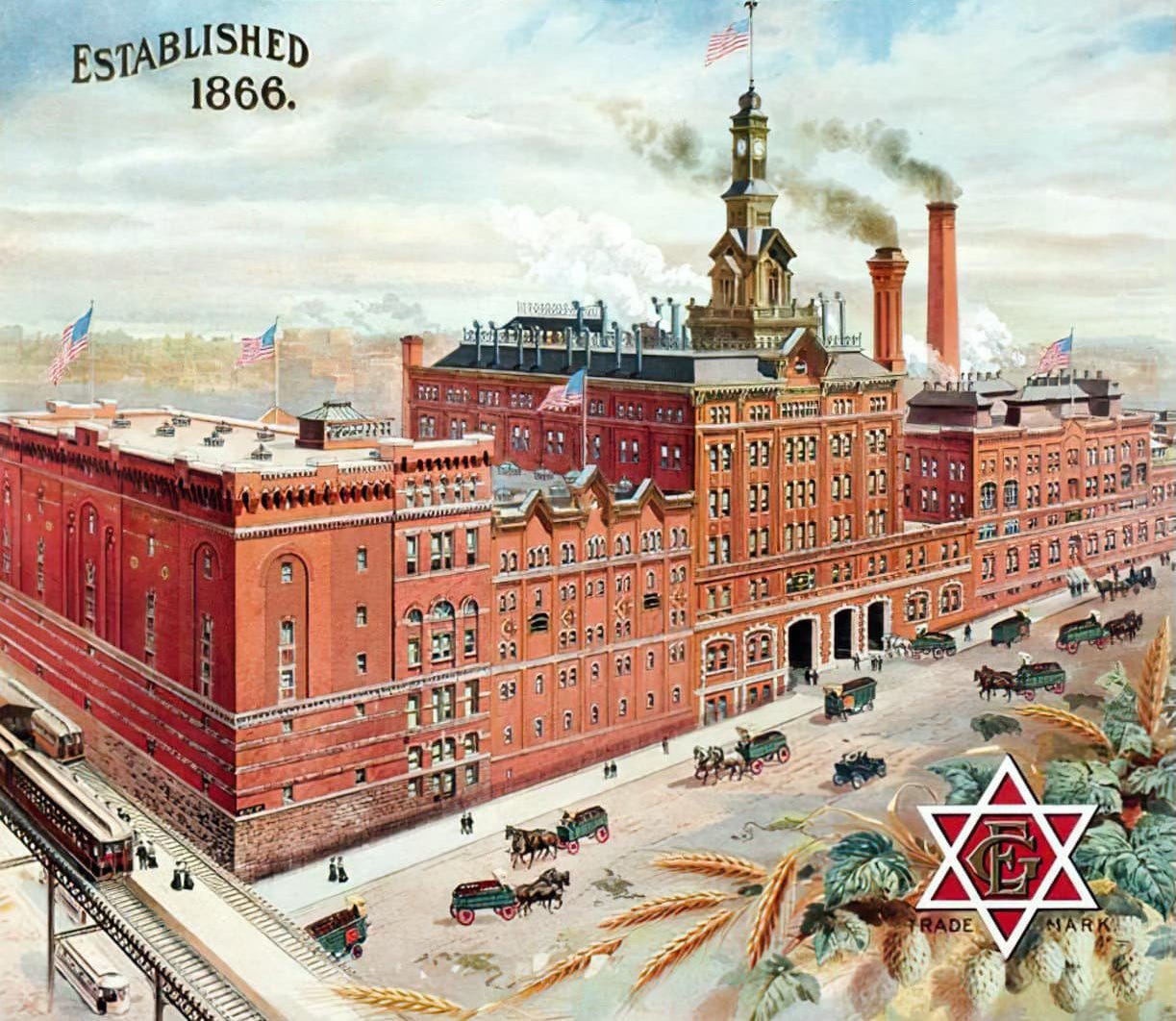
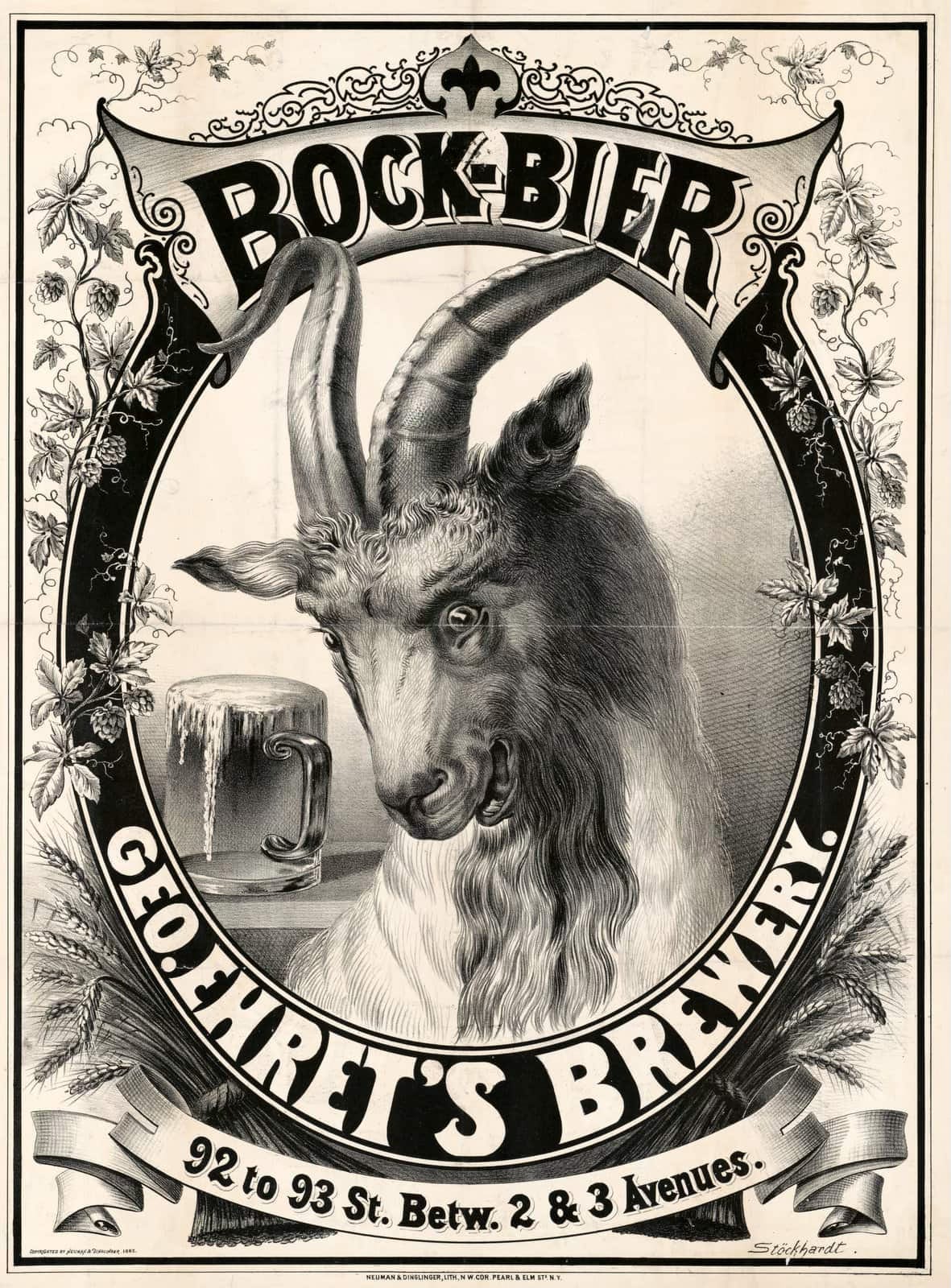
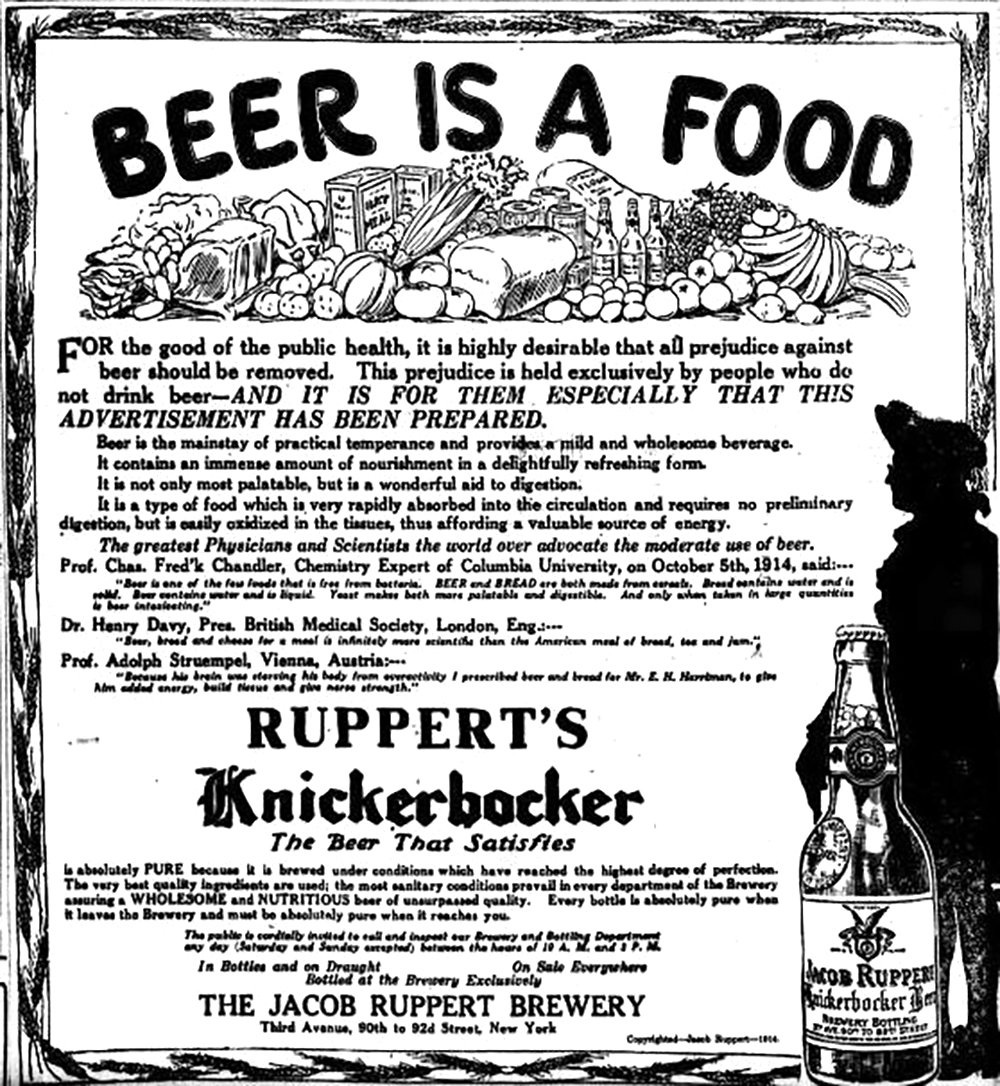
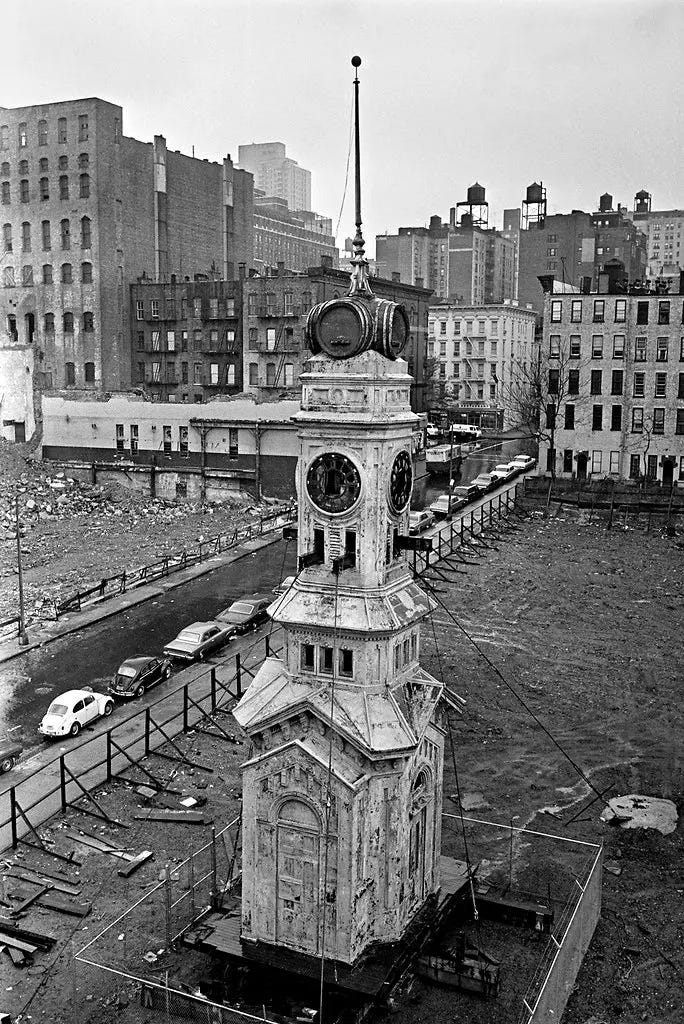
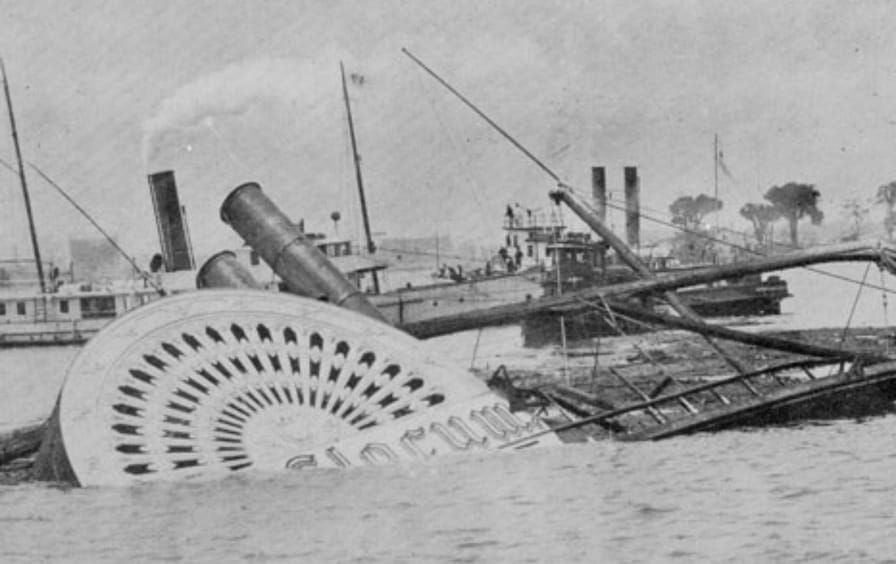
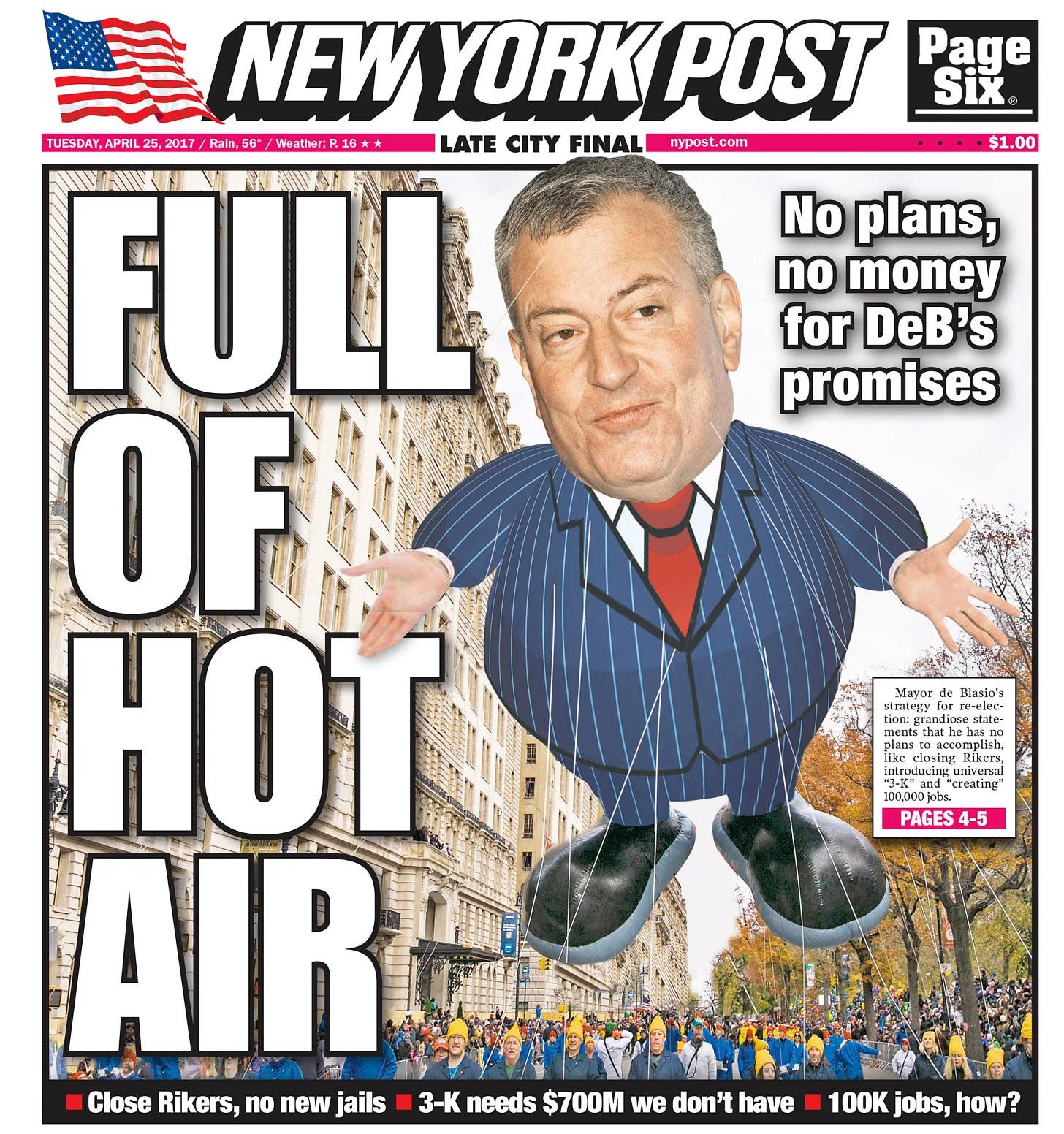
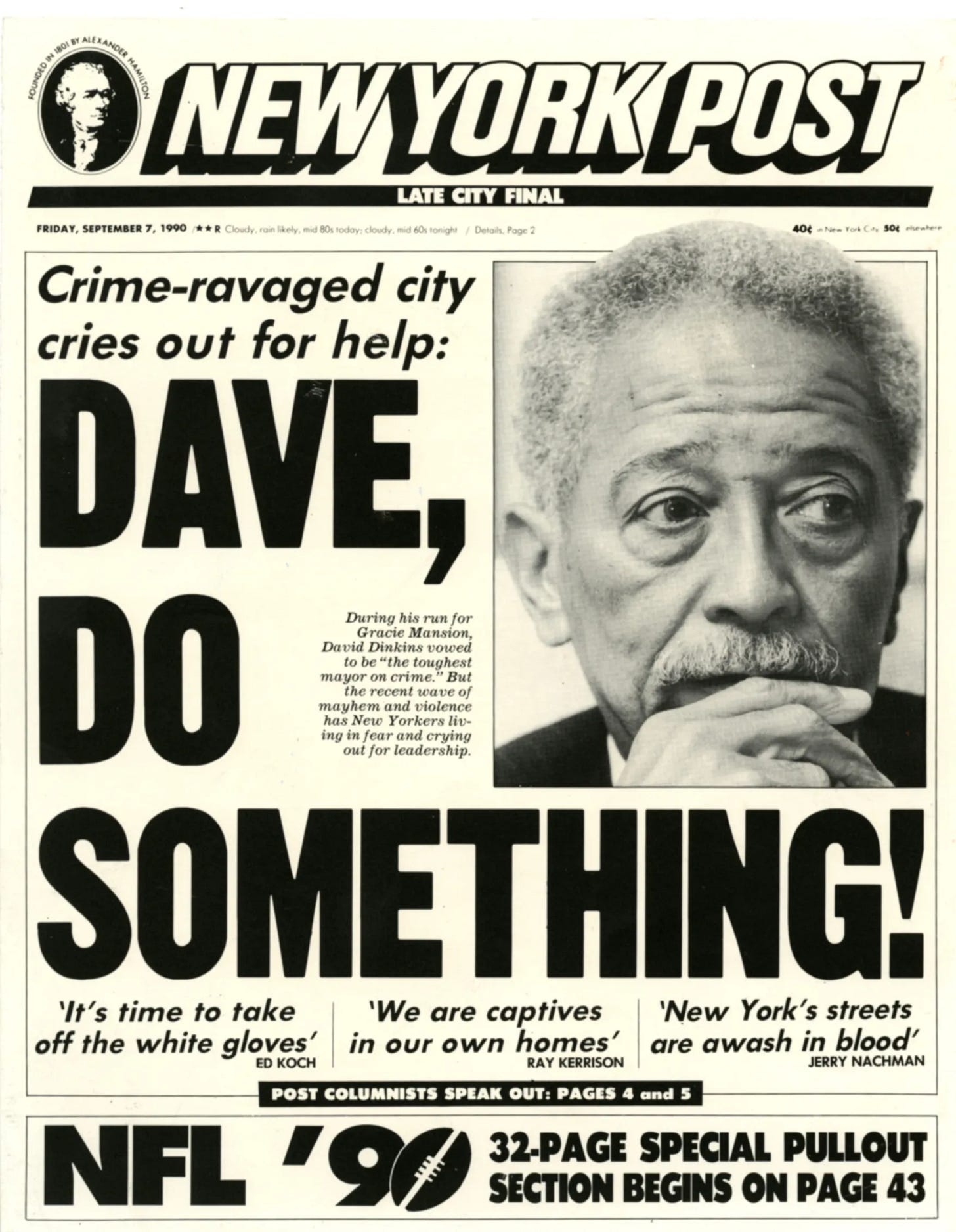
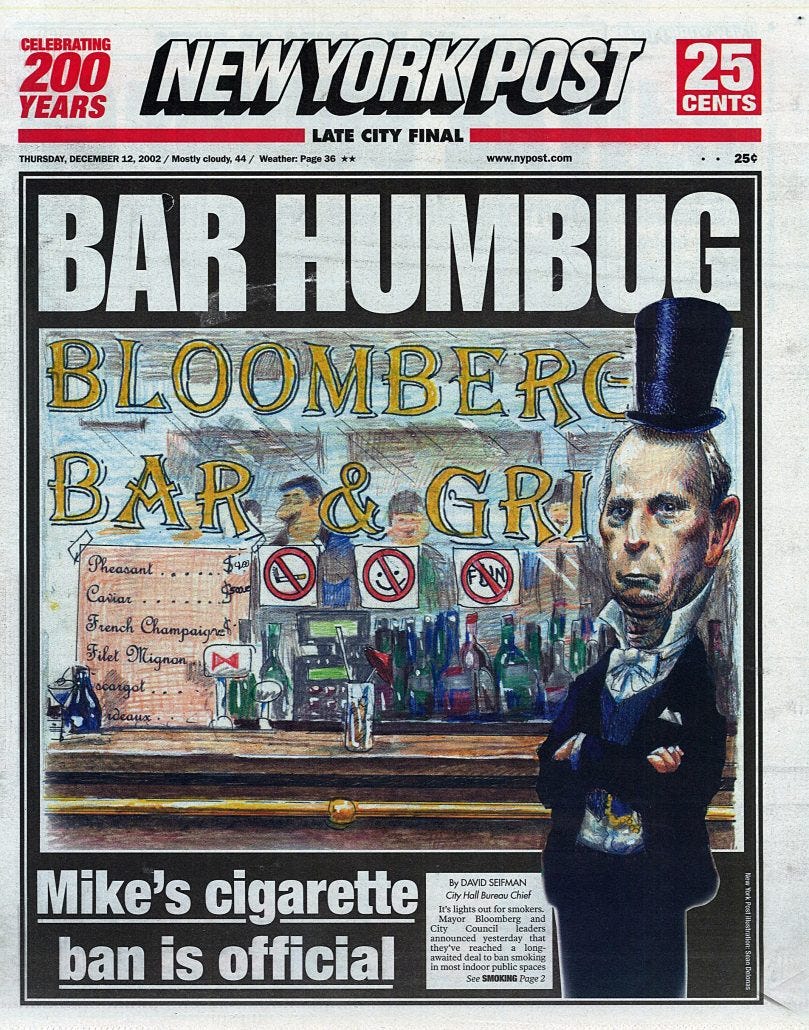

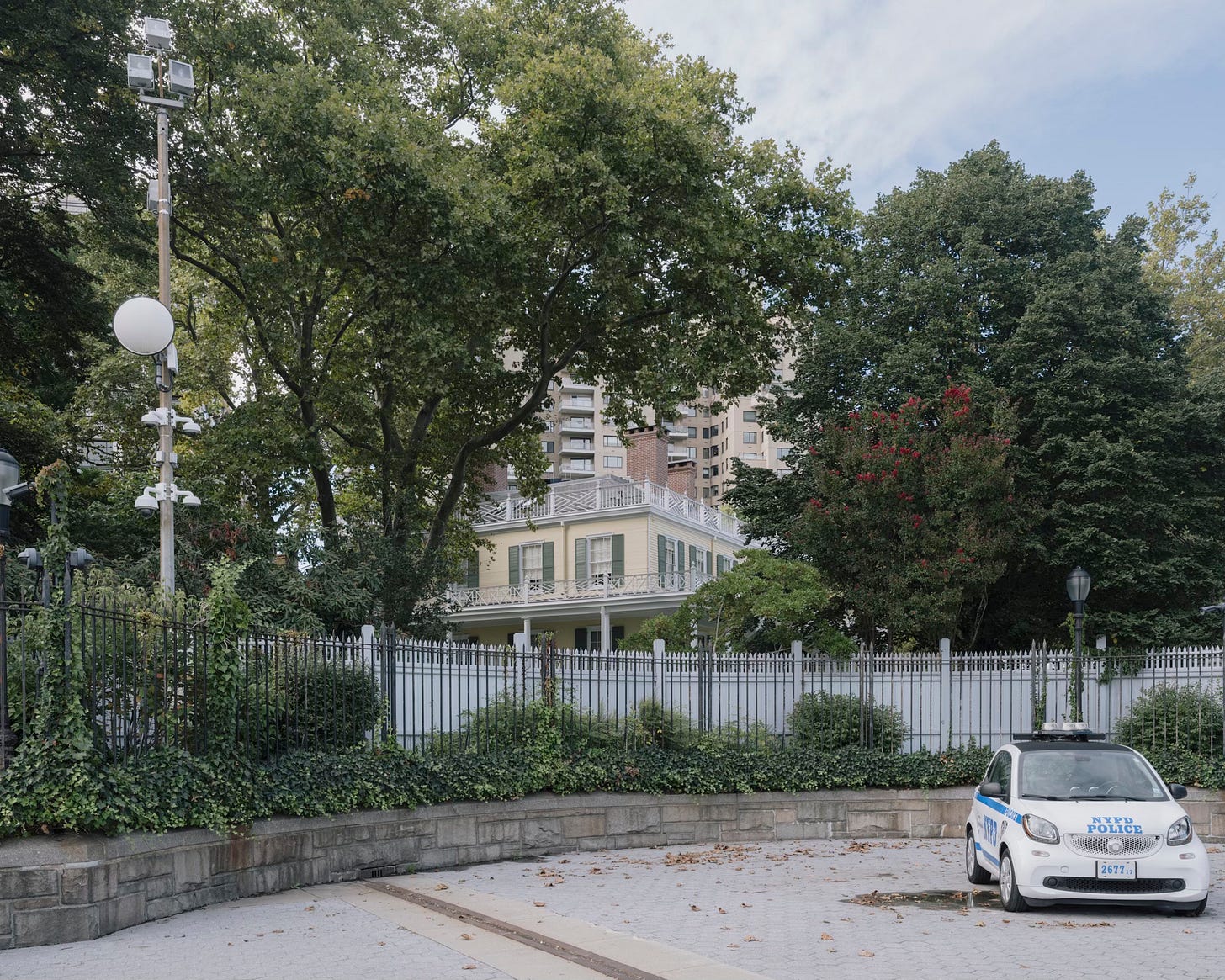

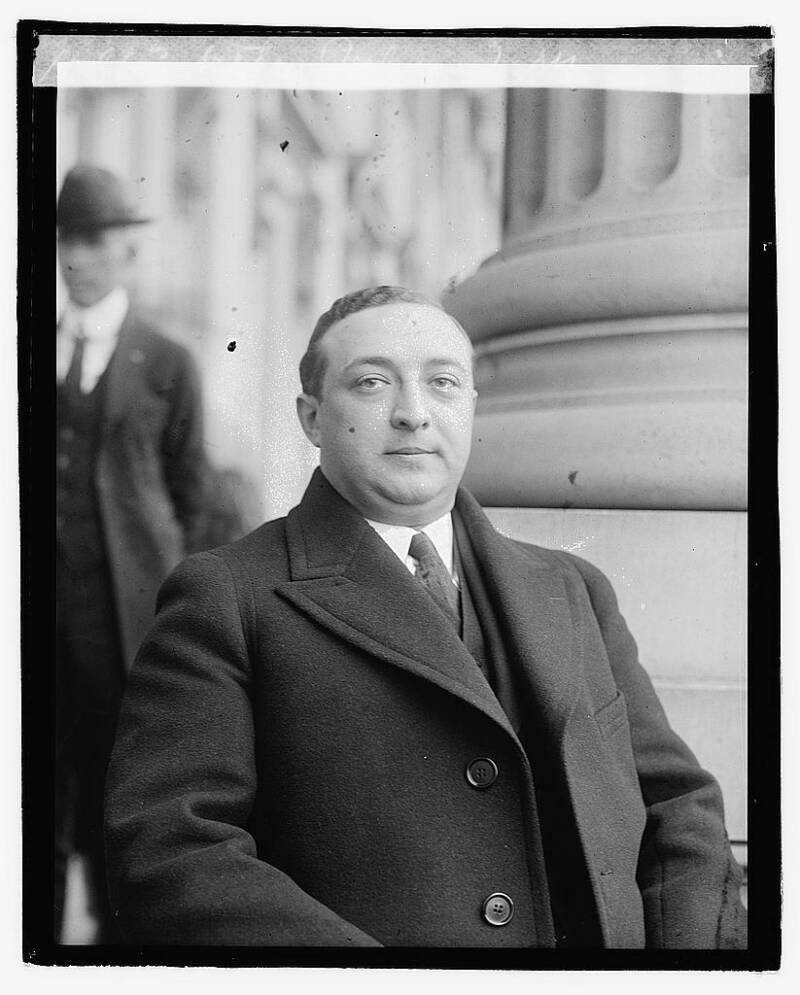
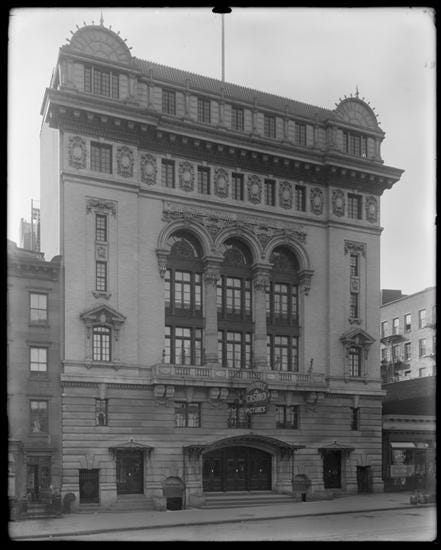
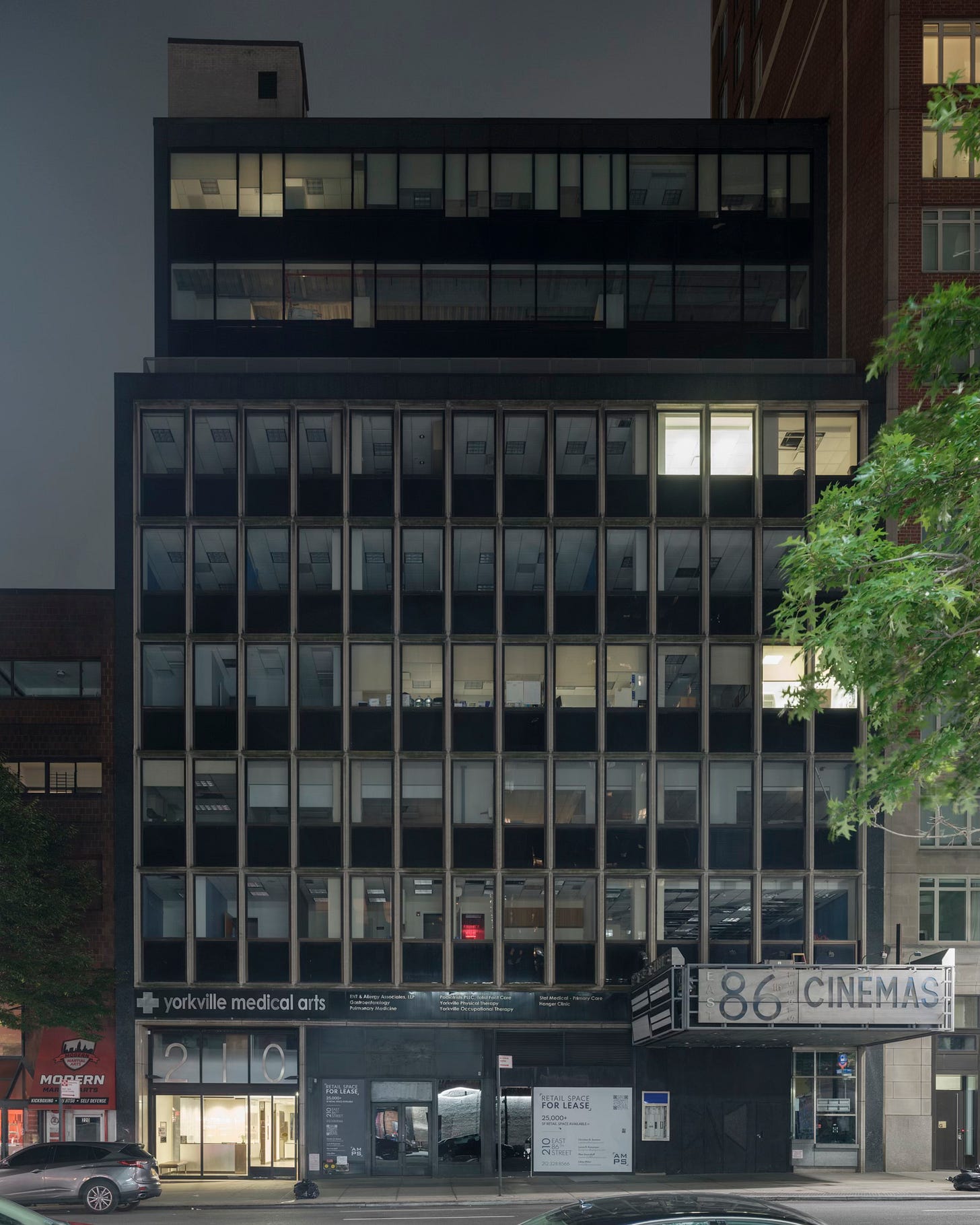
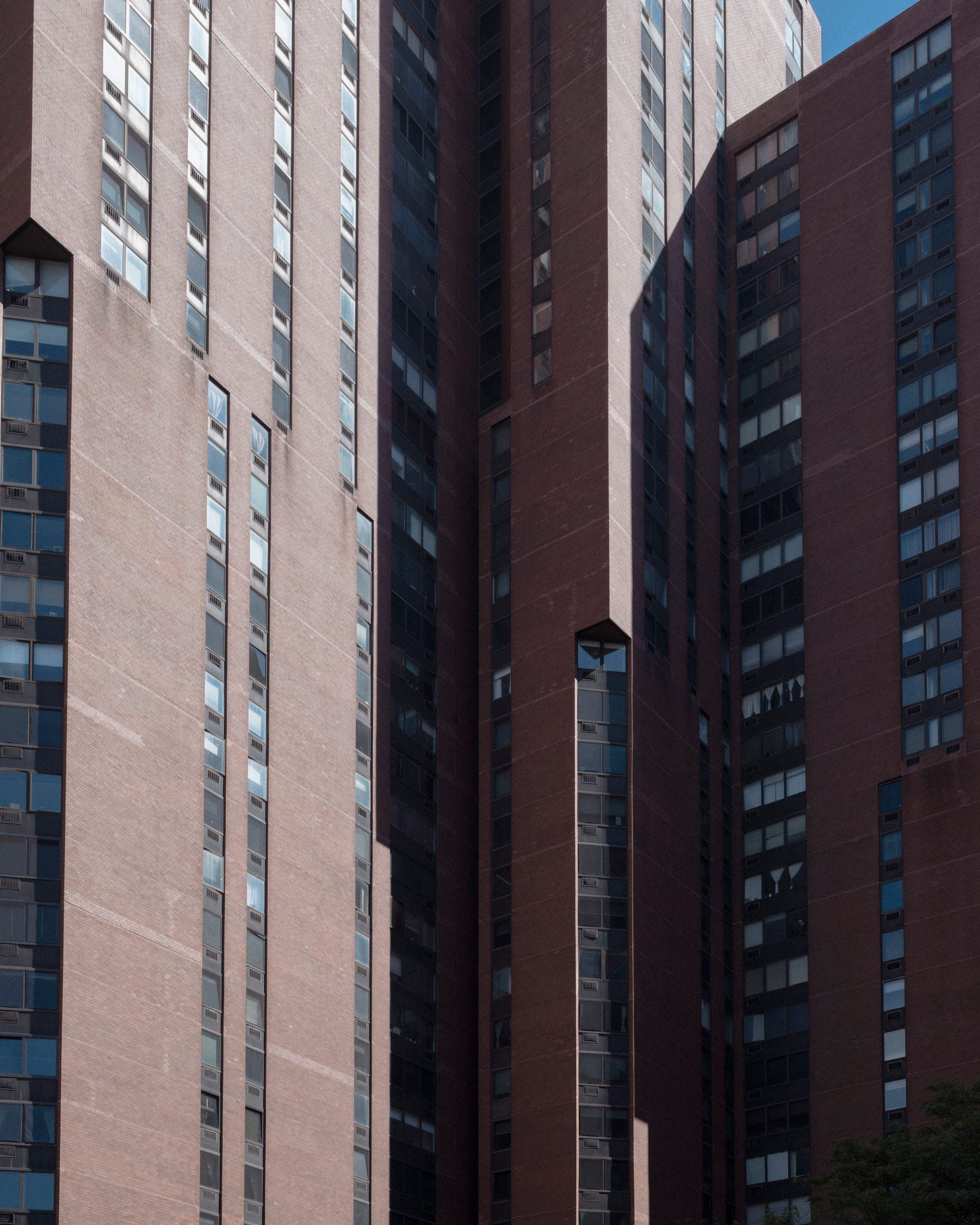


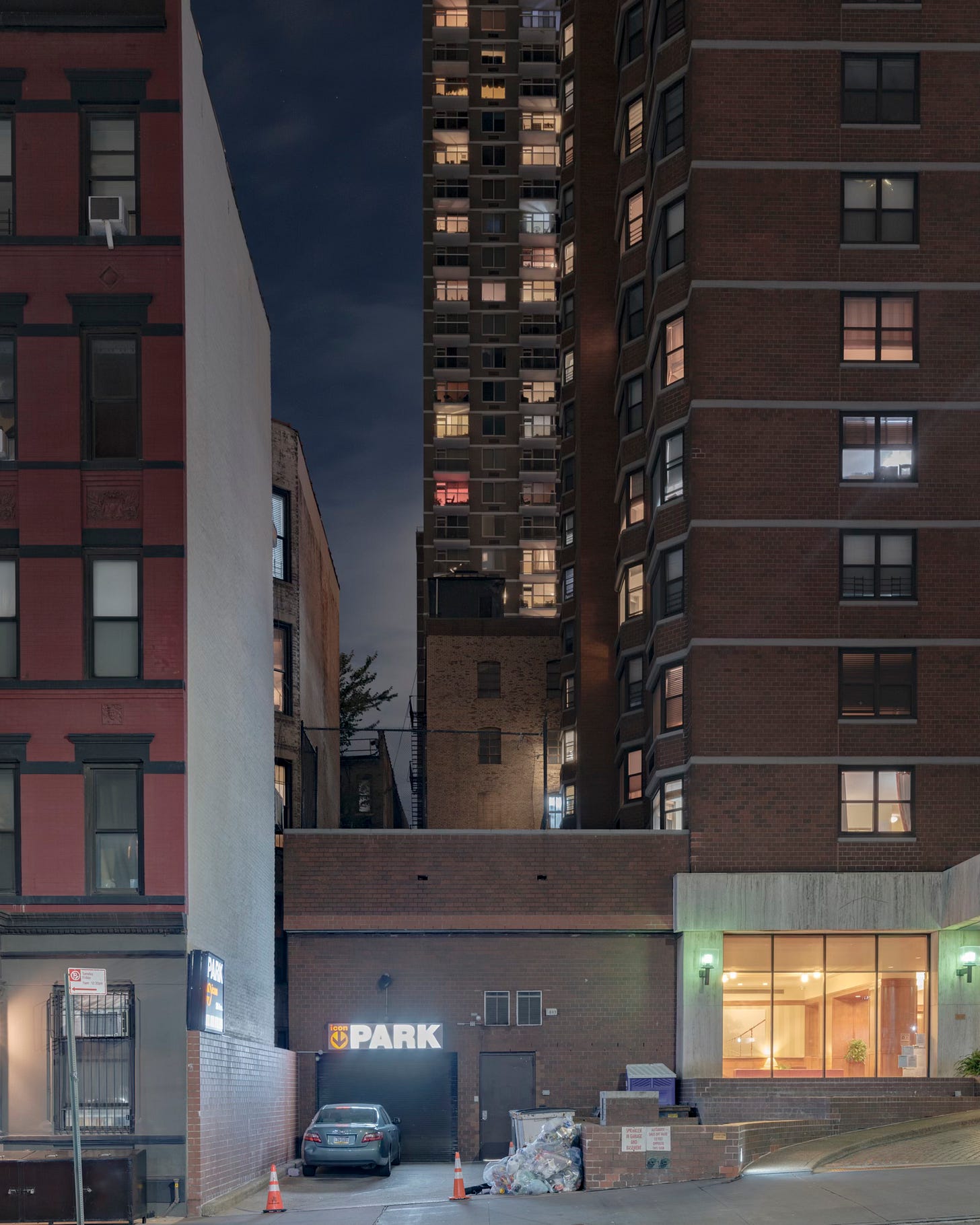
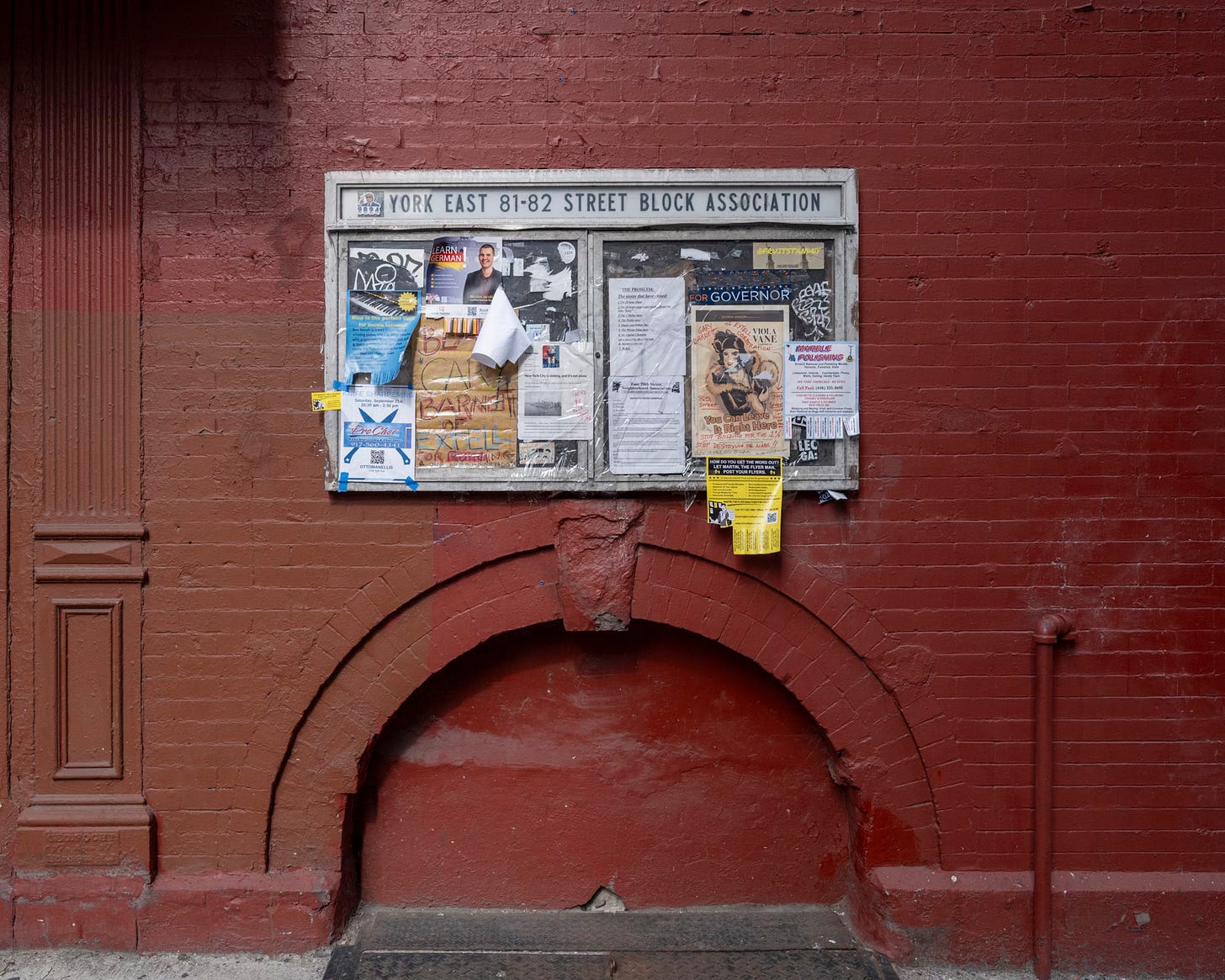
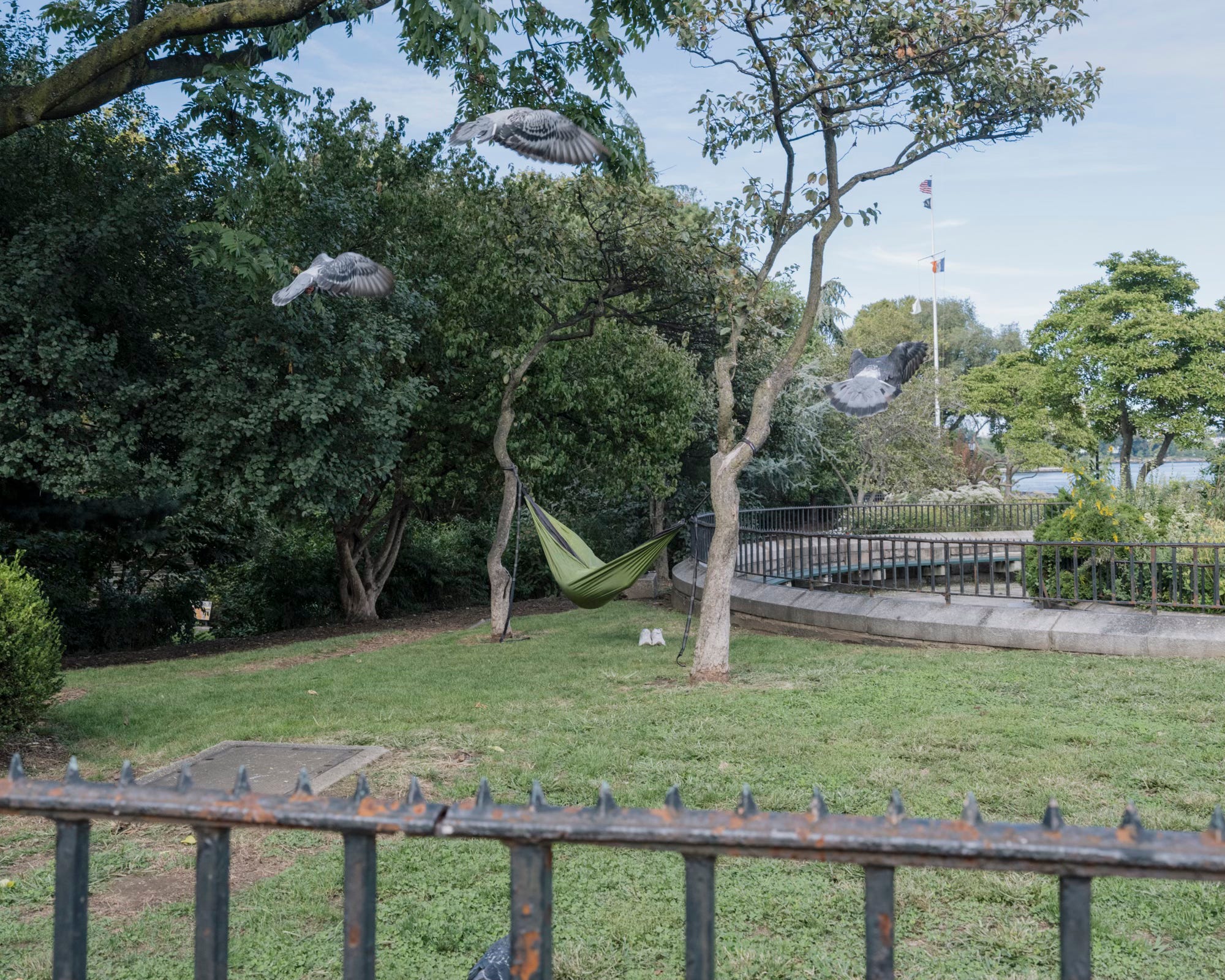

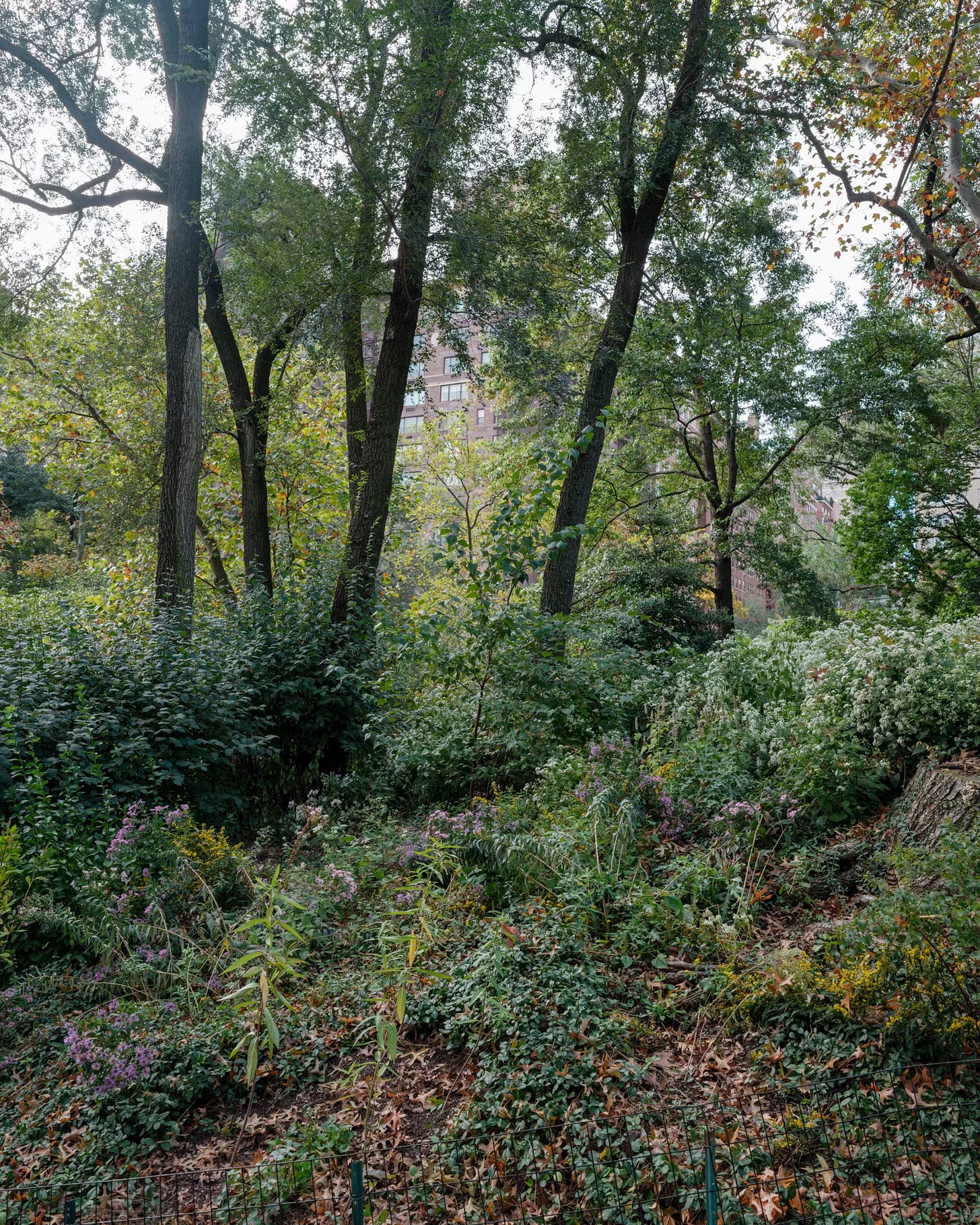
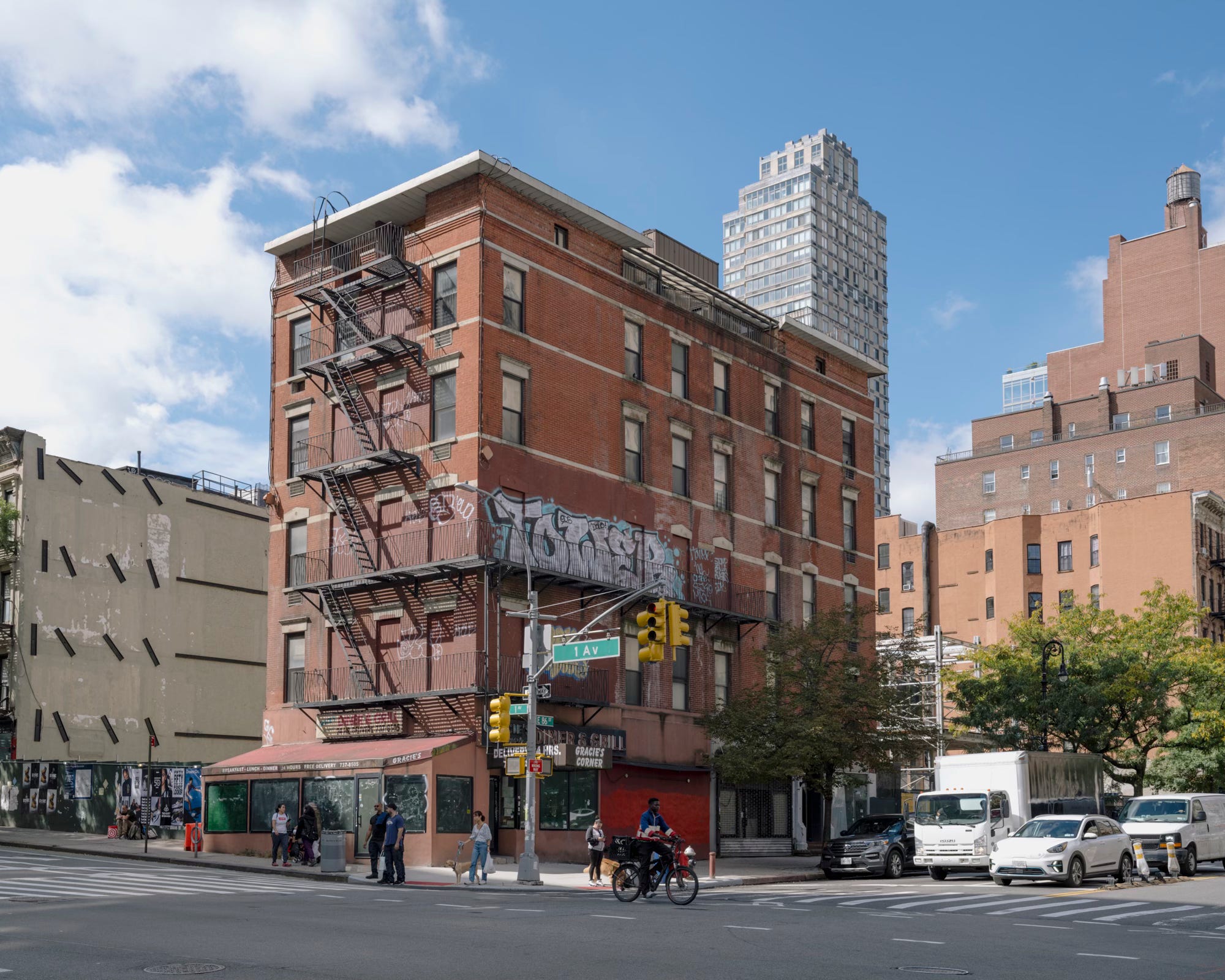
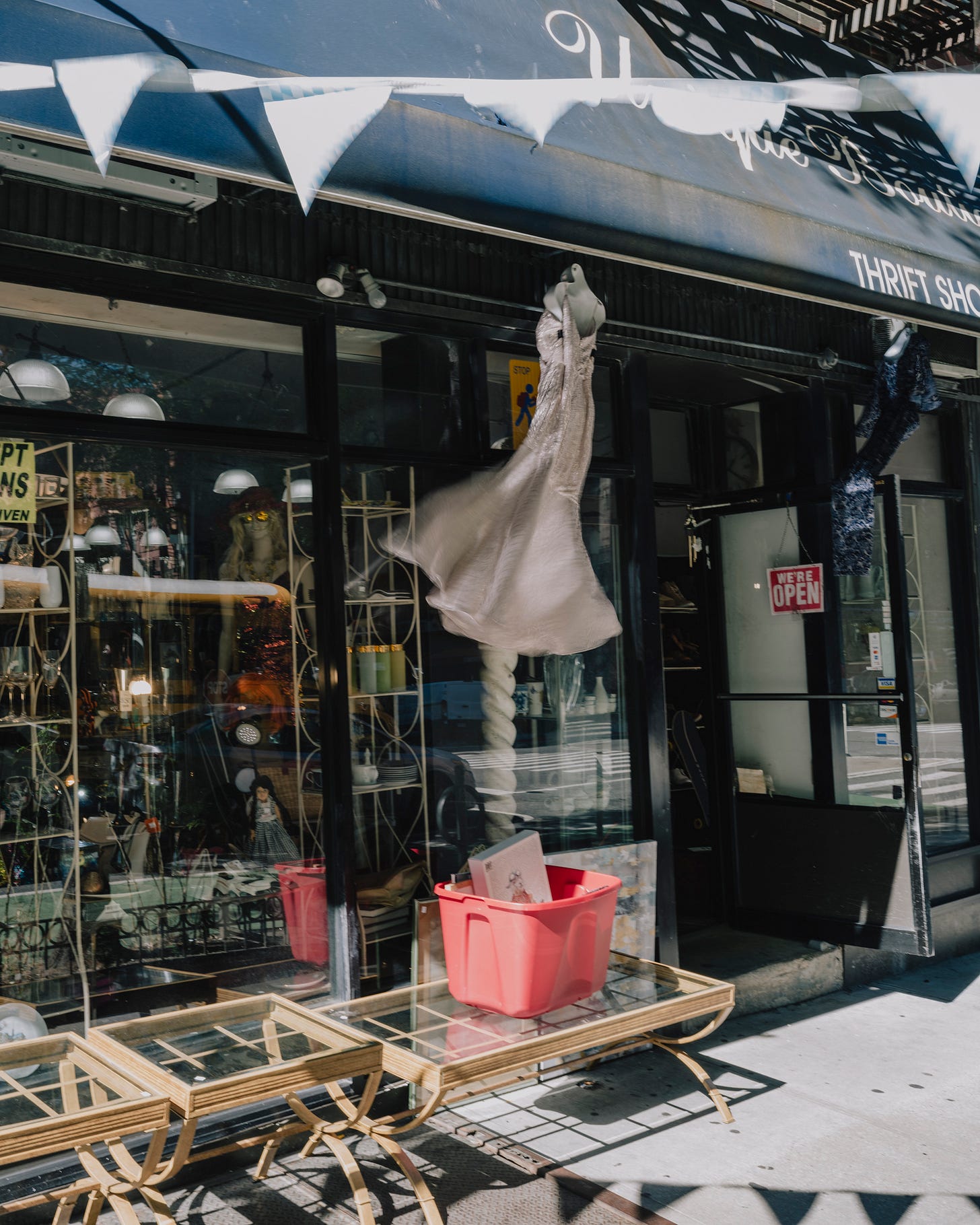
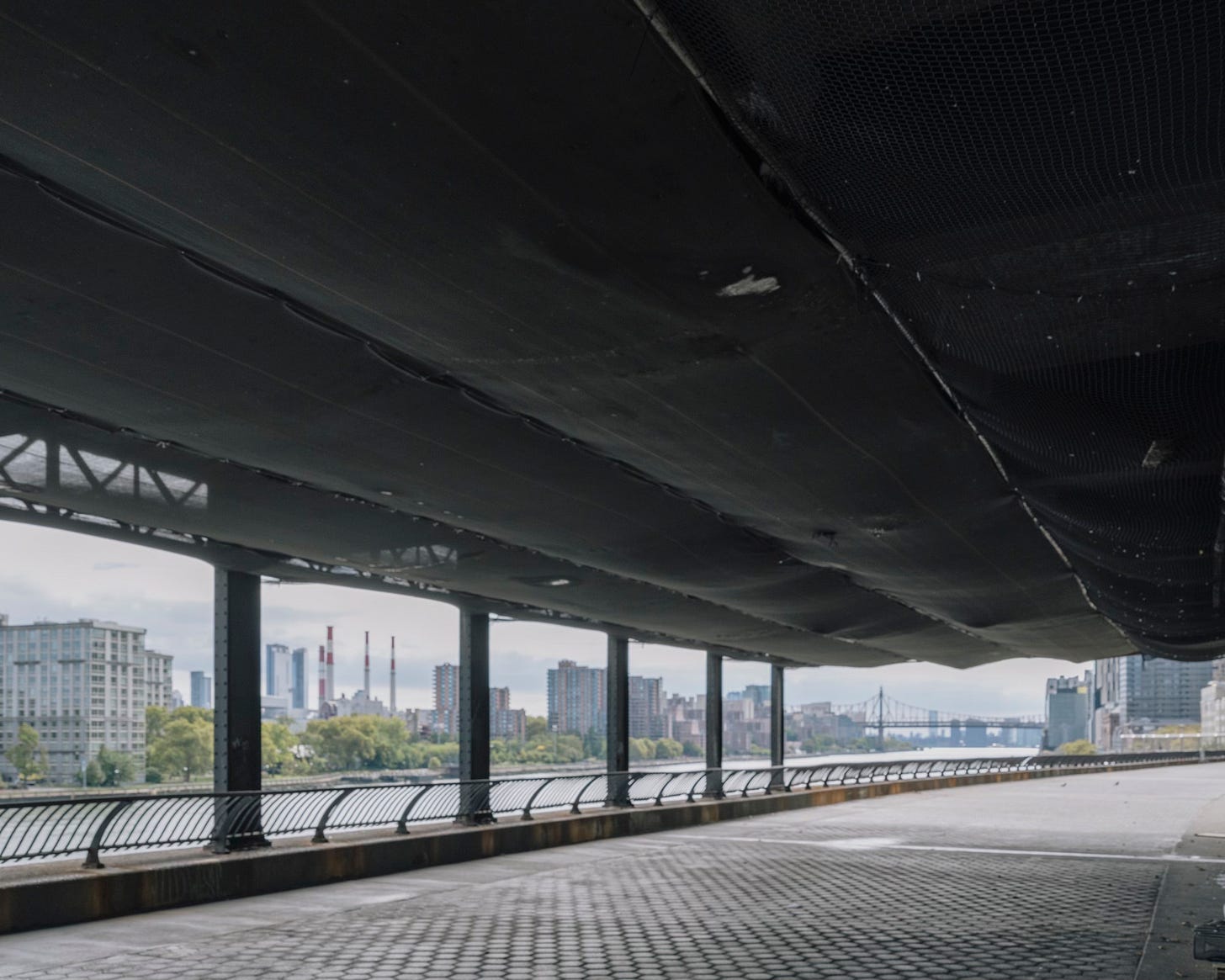
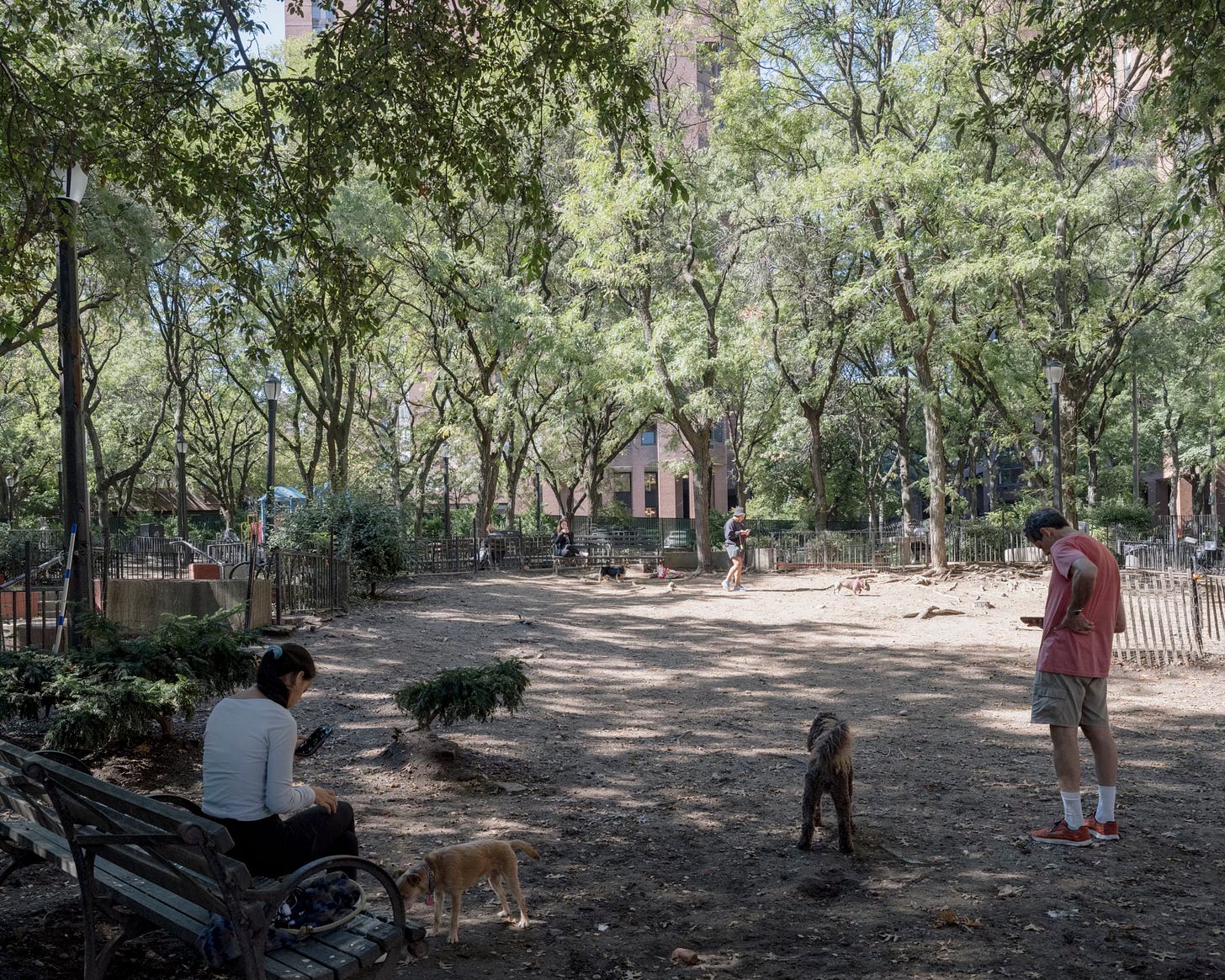
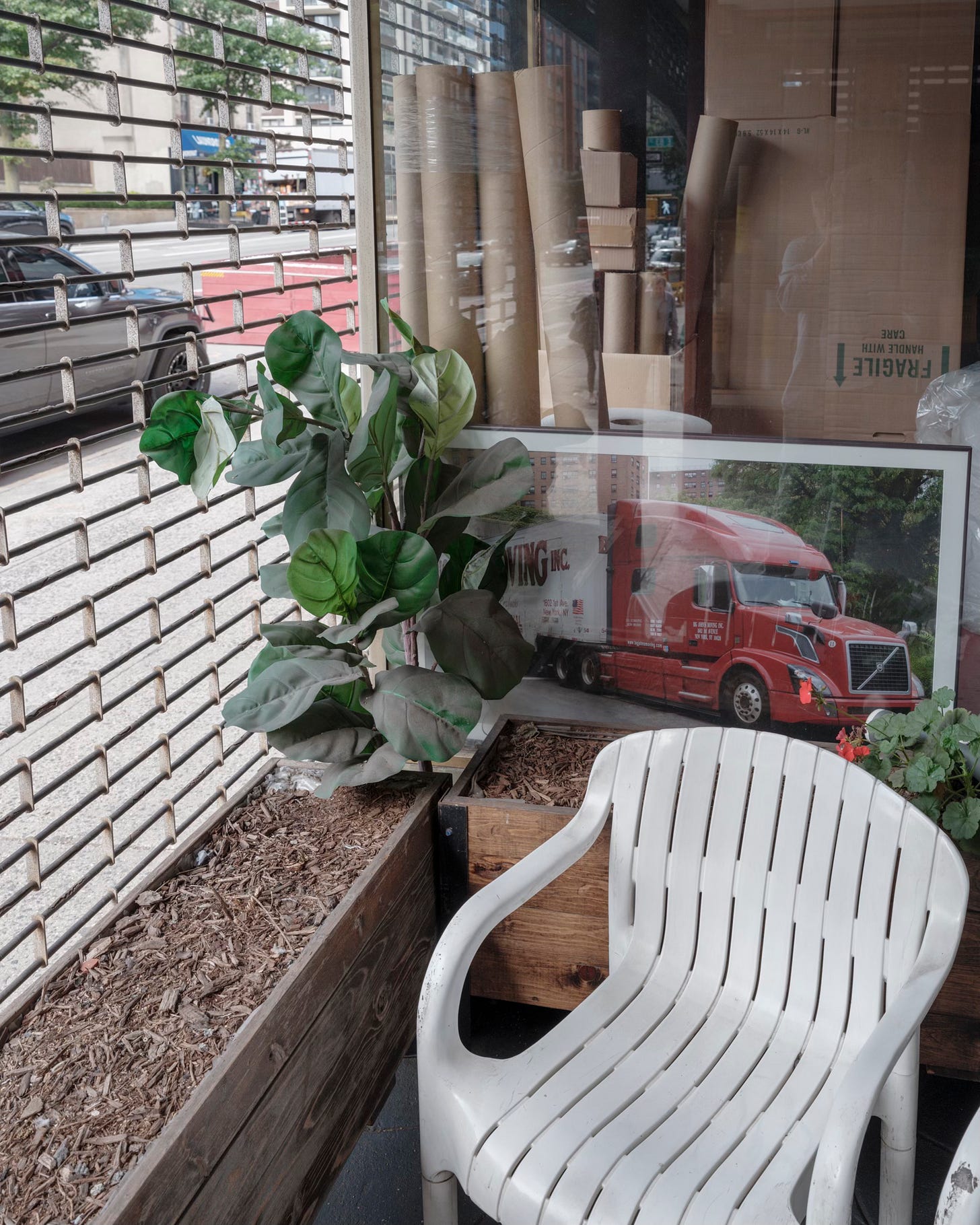

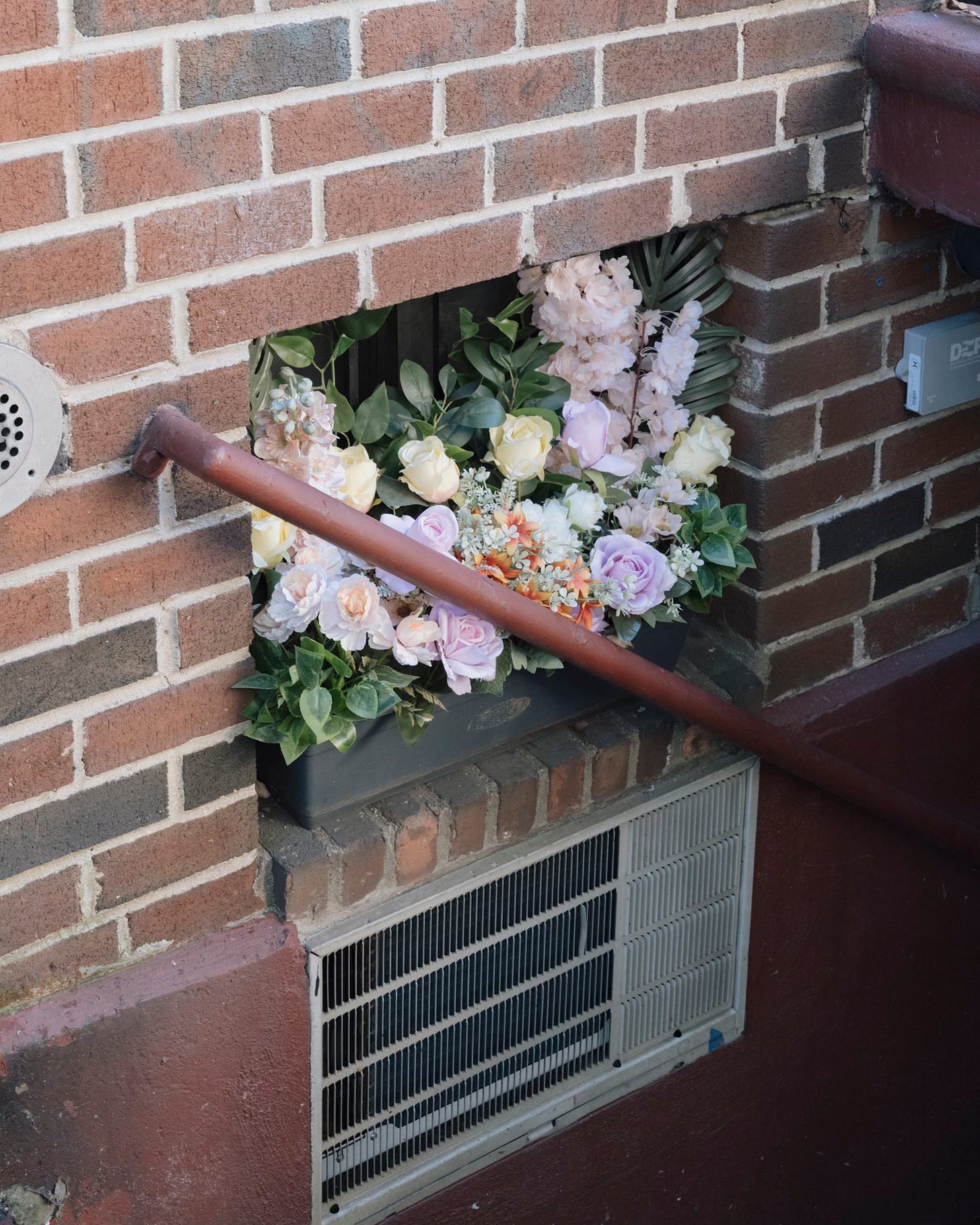
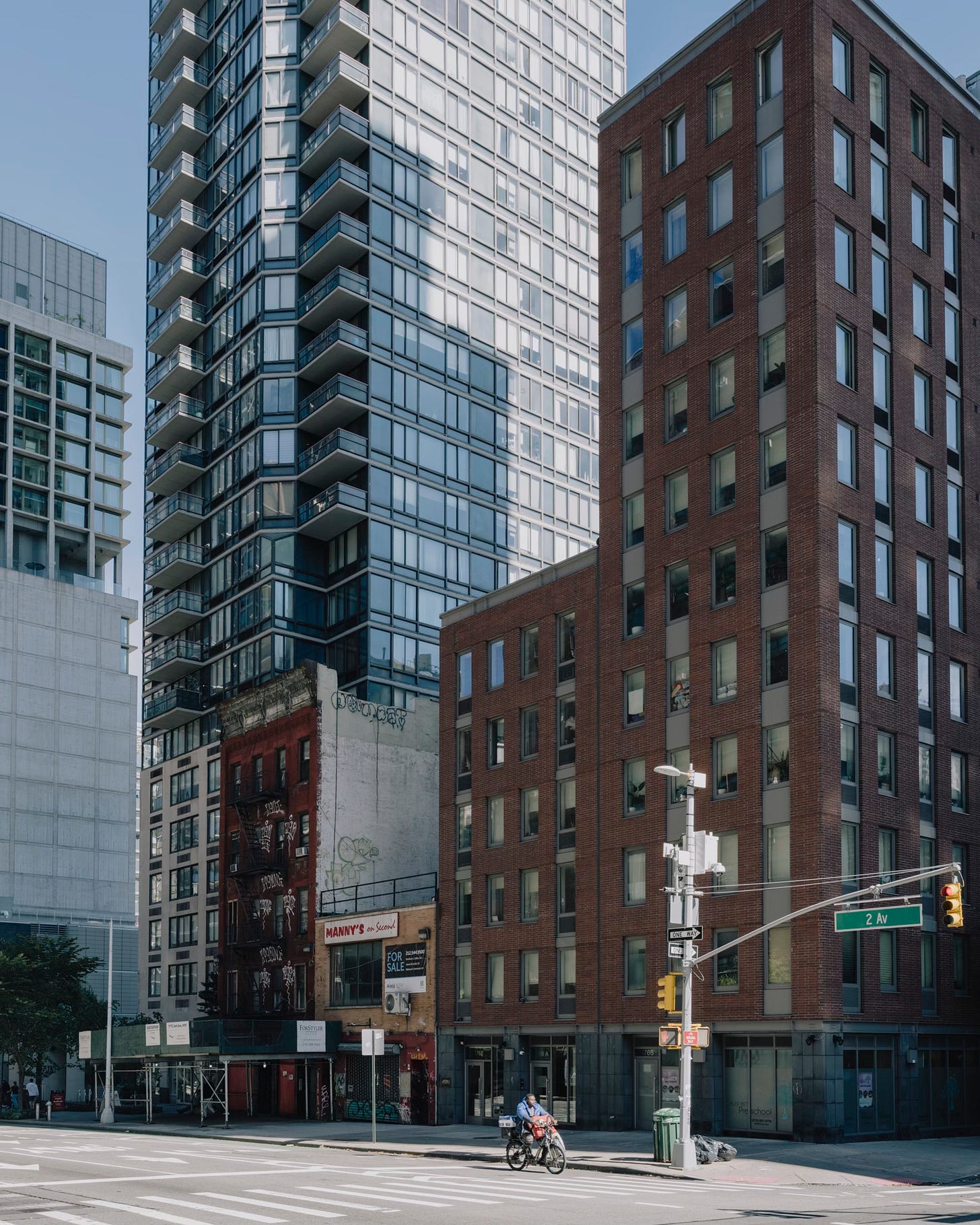
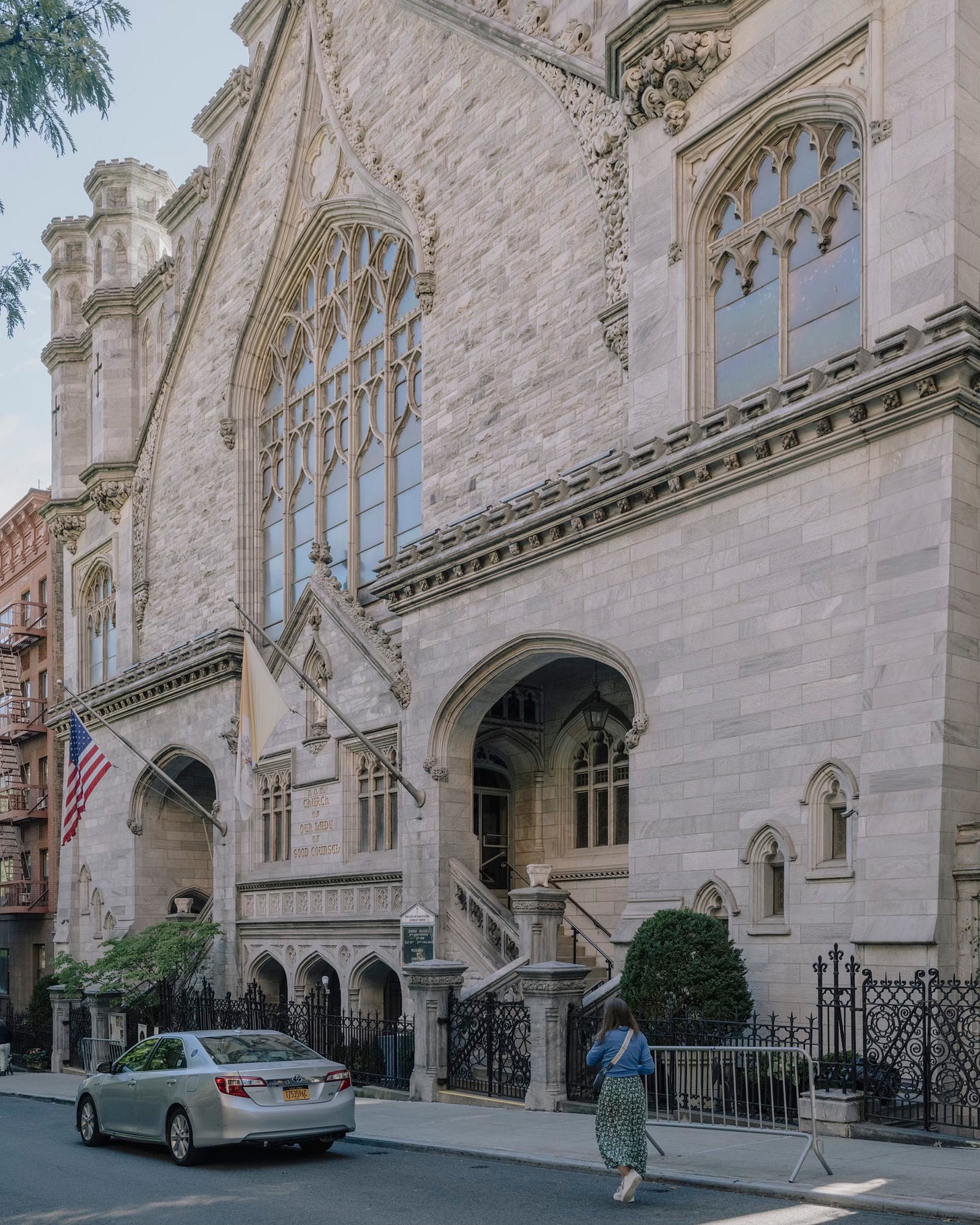
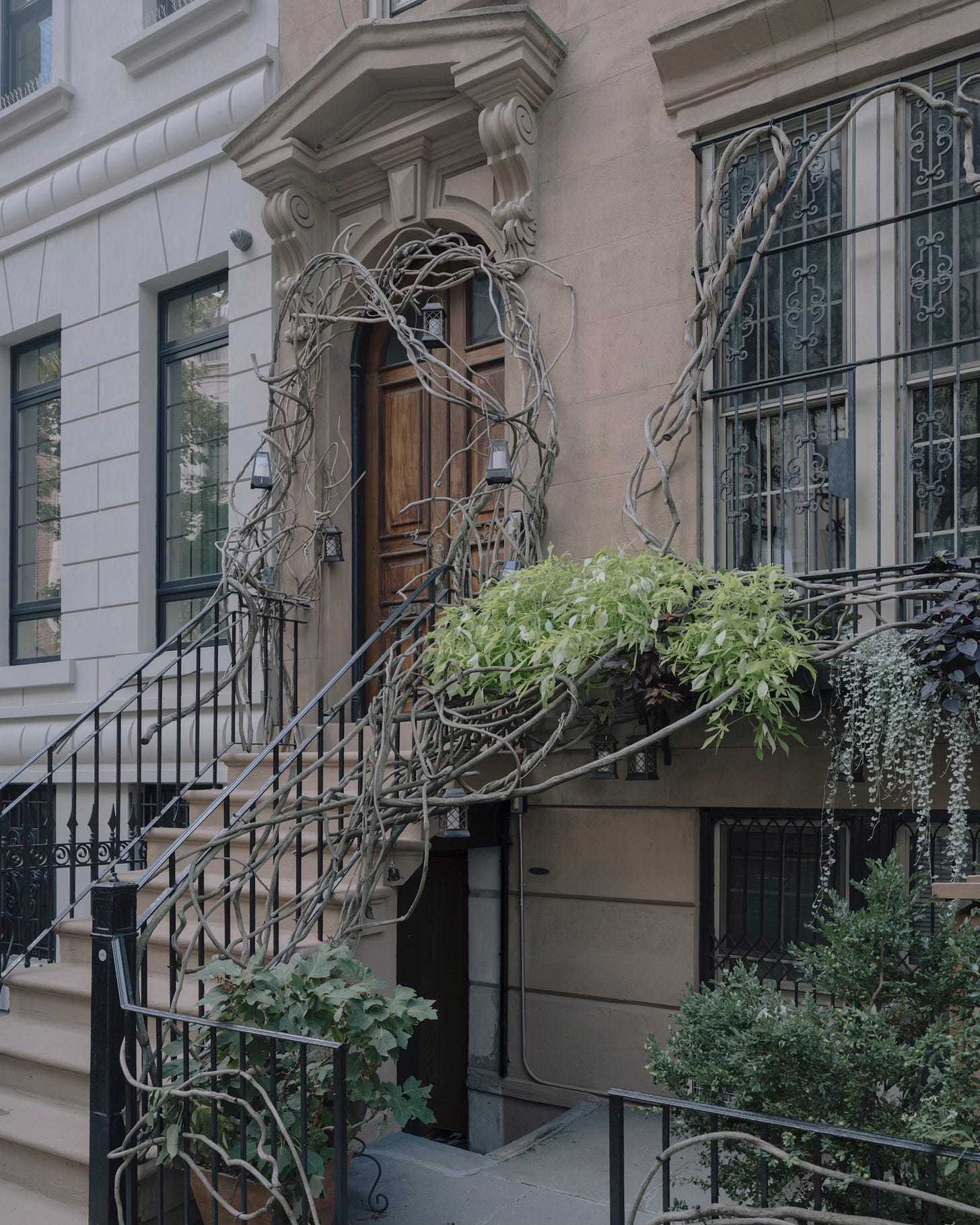
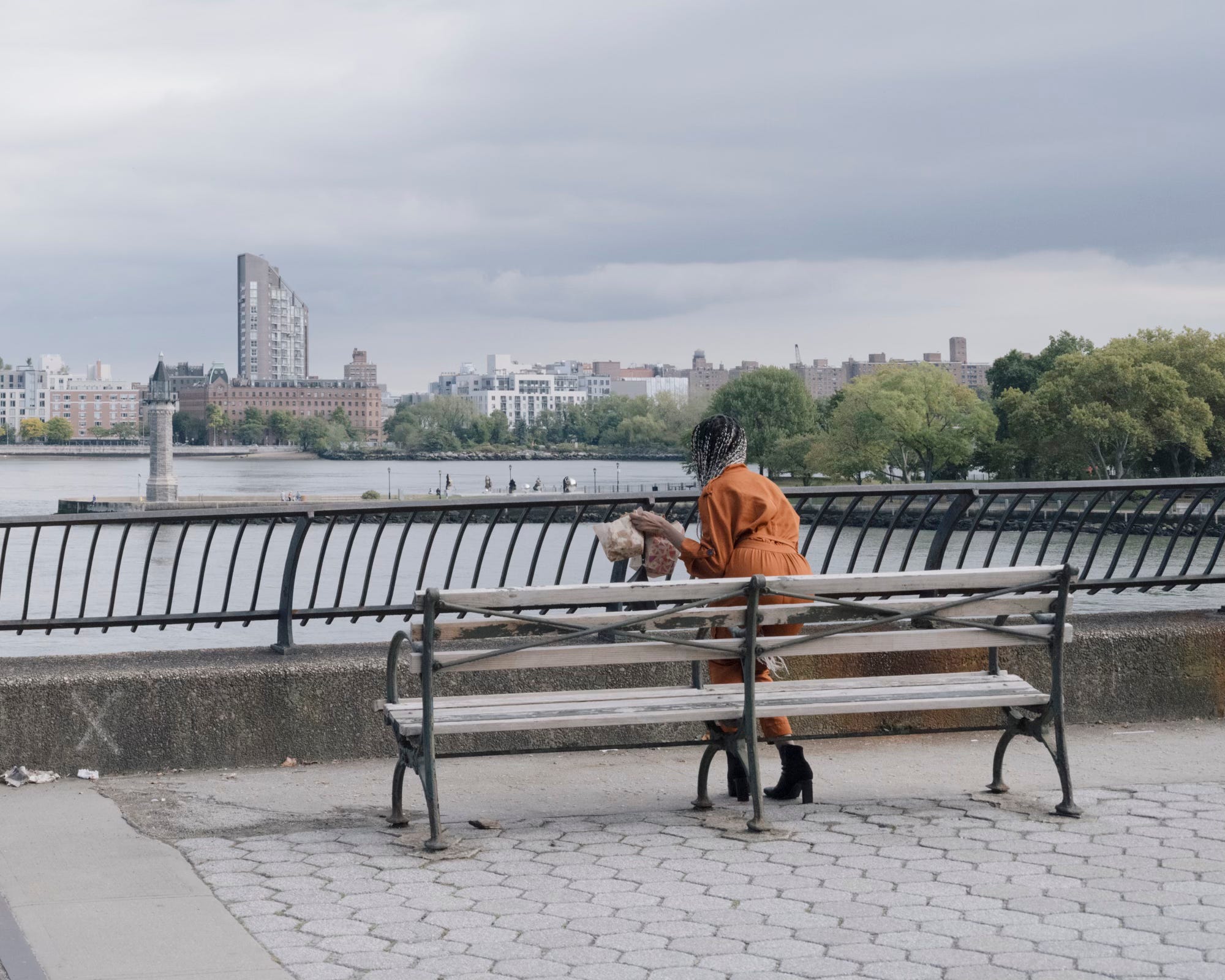
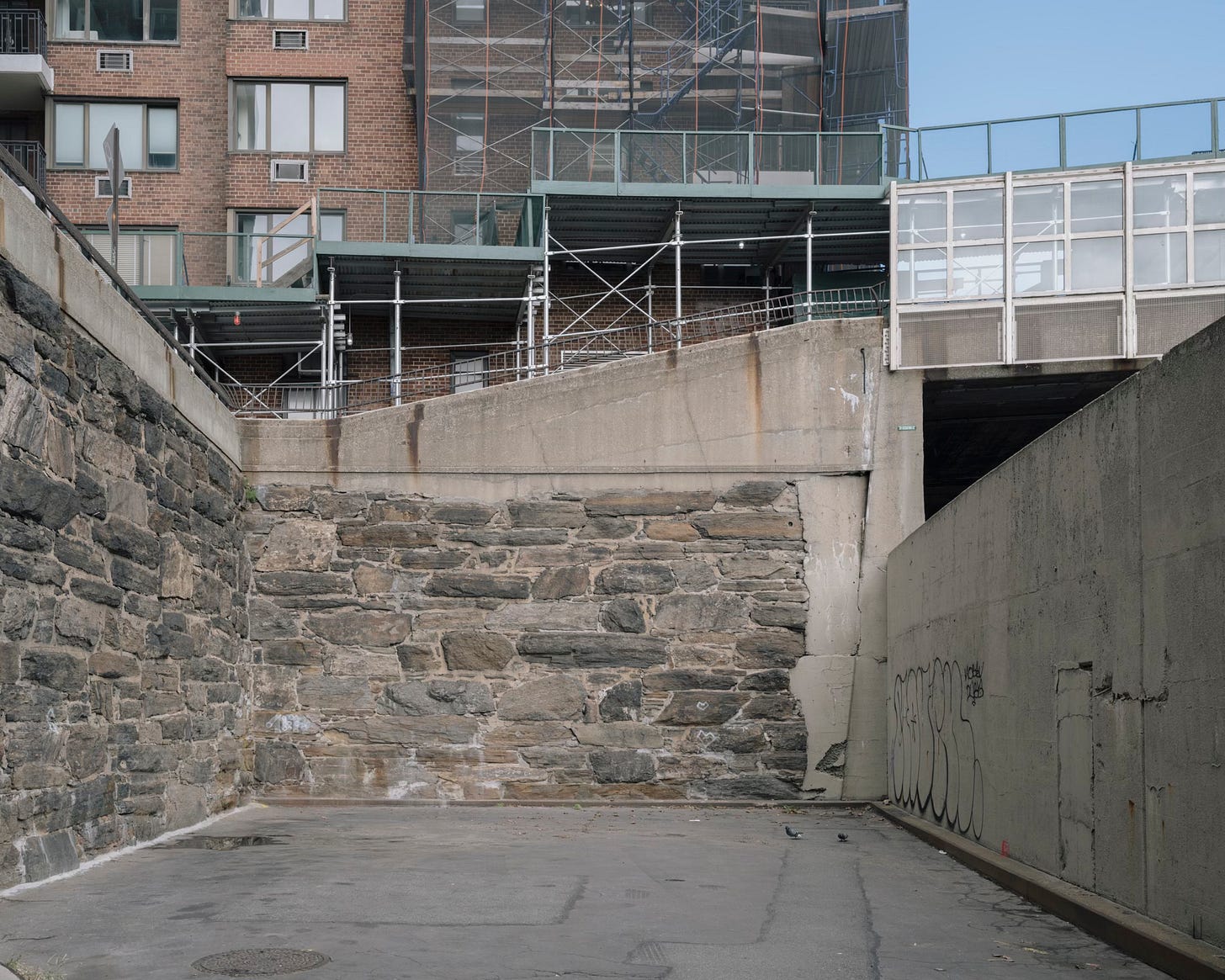
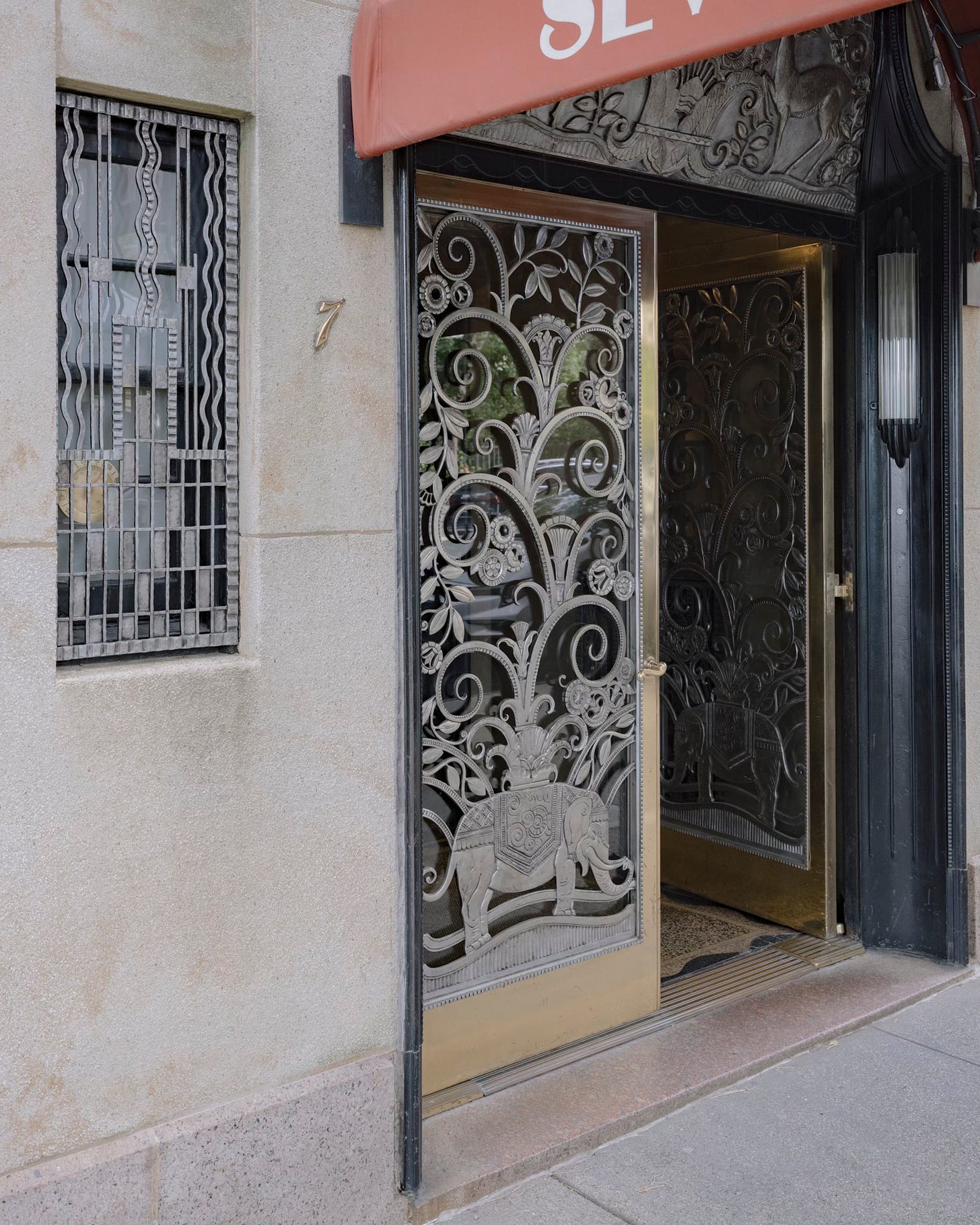
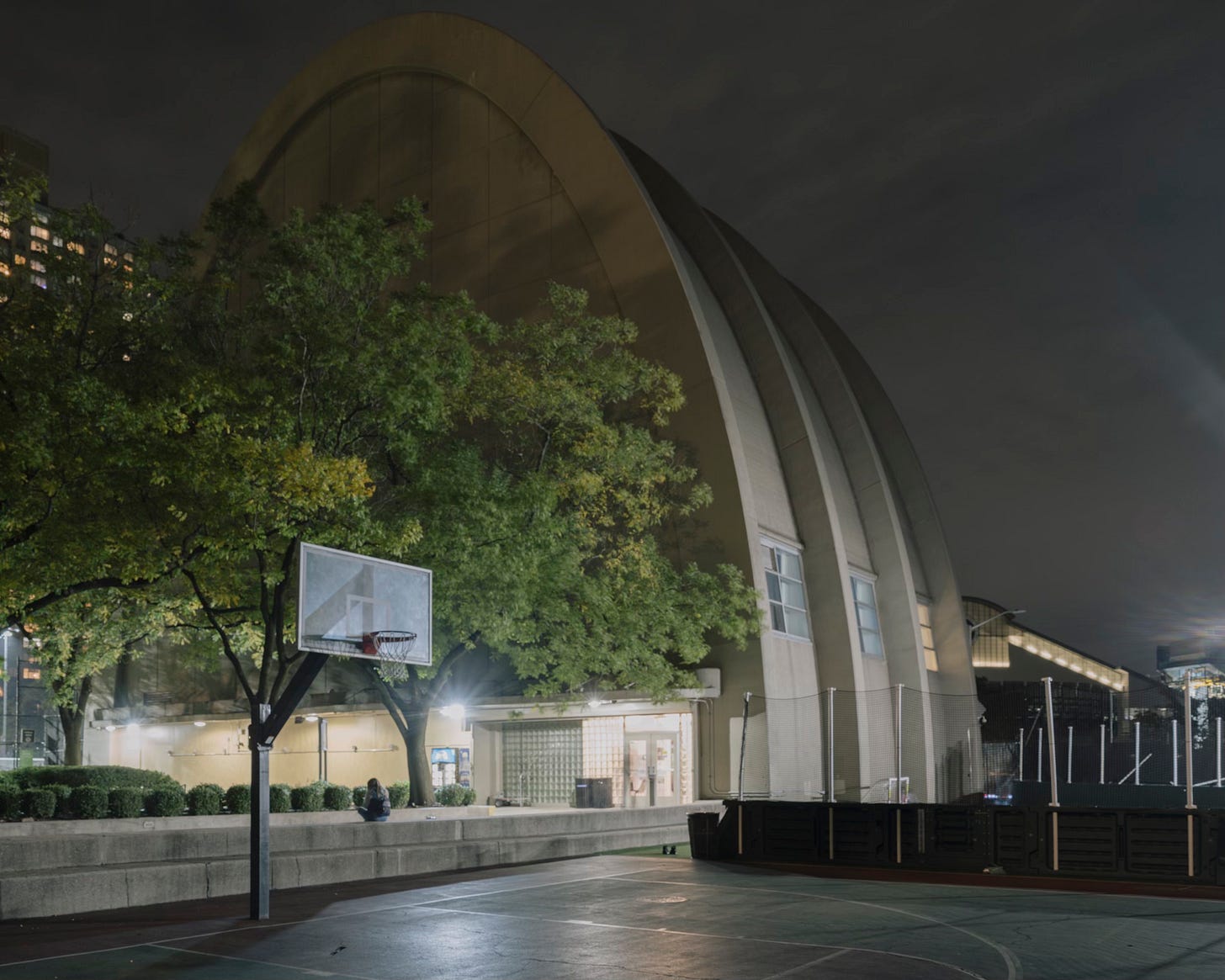
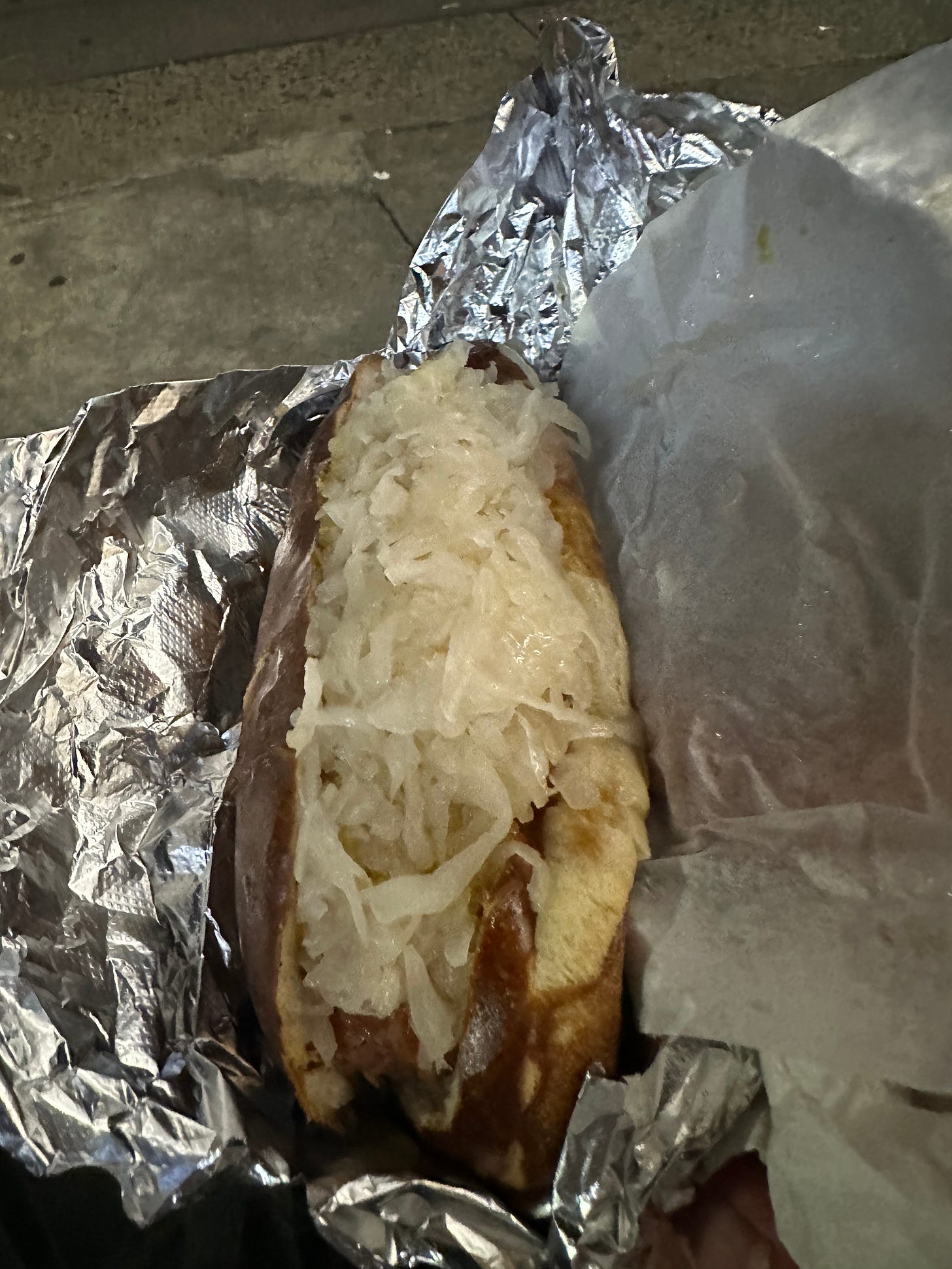
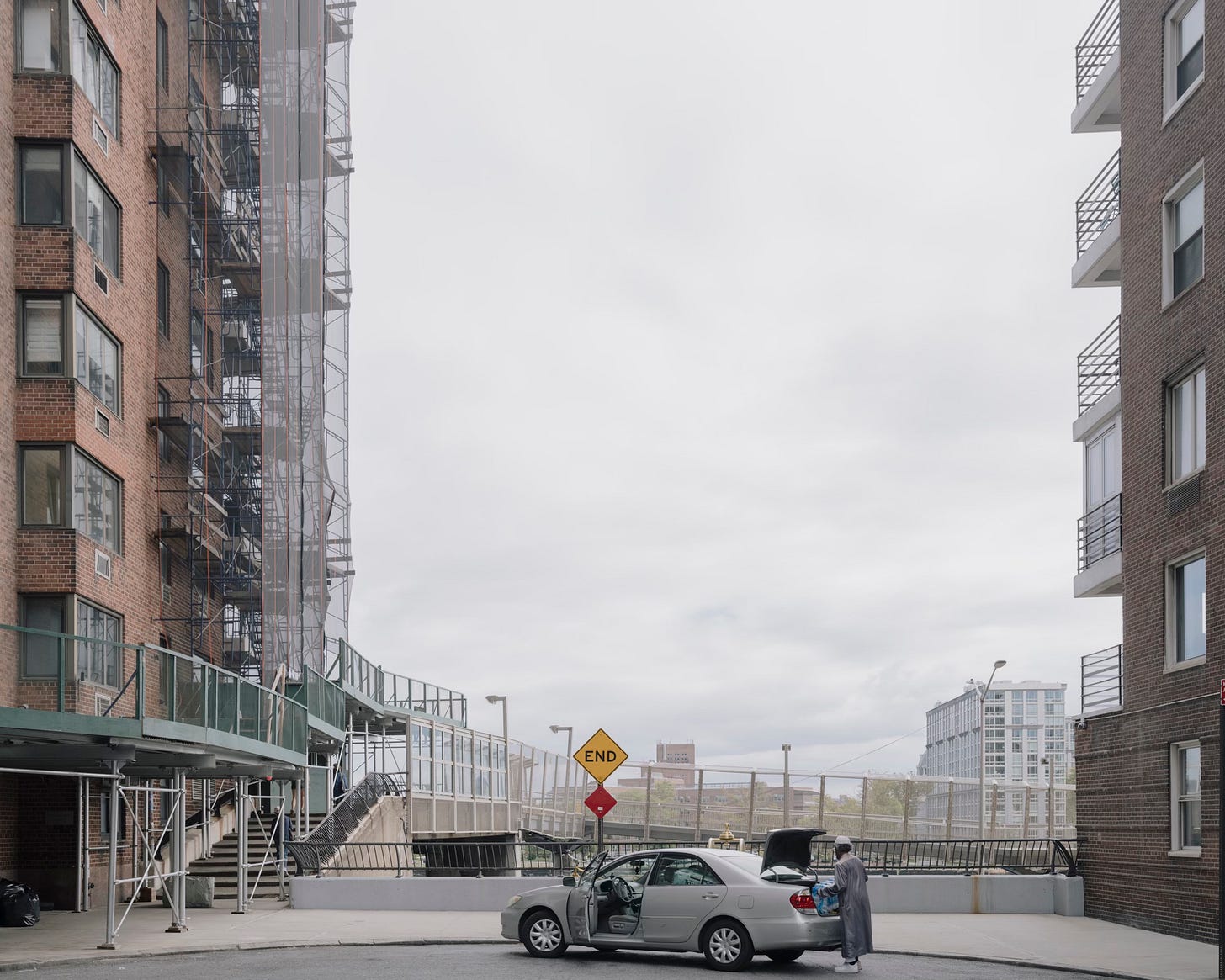
I loved this so much!! This is the neighborhood I grew up in & was so excited to see it in your newsletter (I'm a big fan). My favorite piece of info is that it's where the black and white cookie was invented :) Specifically, people believe, at Glaser's bakery (which is now sadly closed, but had a 116 year run!). Thank you for this from Yorkville!
There is a neighborhood called Yorkville in the Canadian city of Toronto (previously named York) as well. During the 1960s and 1970s, it was a well-known live music hub that played a role in launching the careers of Joni Mitchell, Gordon Lightfoot and Neil Young, among others.
I would love to know how and why "Tick Tock" and "Blue Jaw" got their sobriquets....